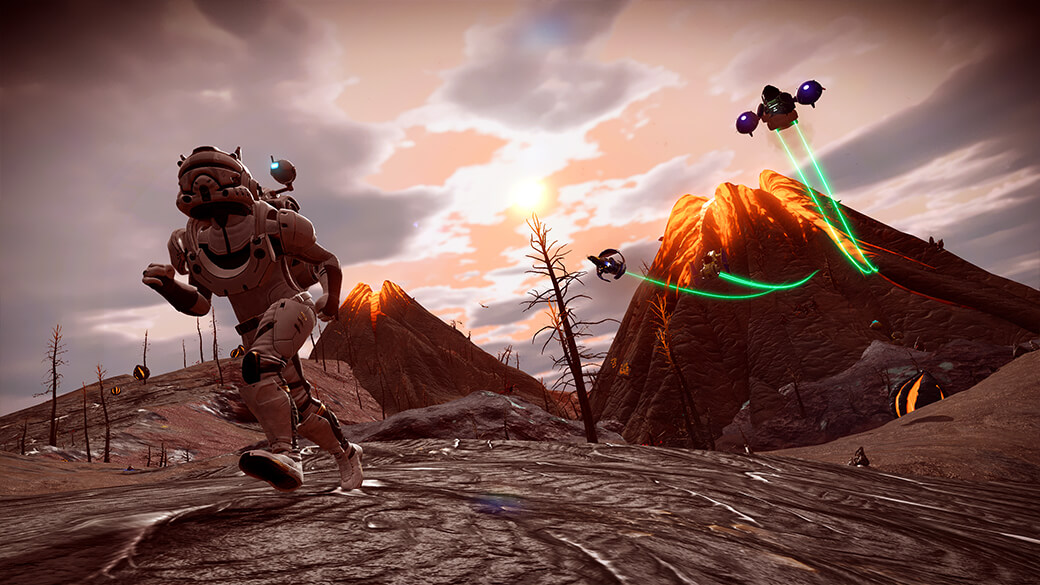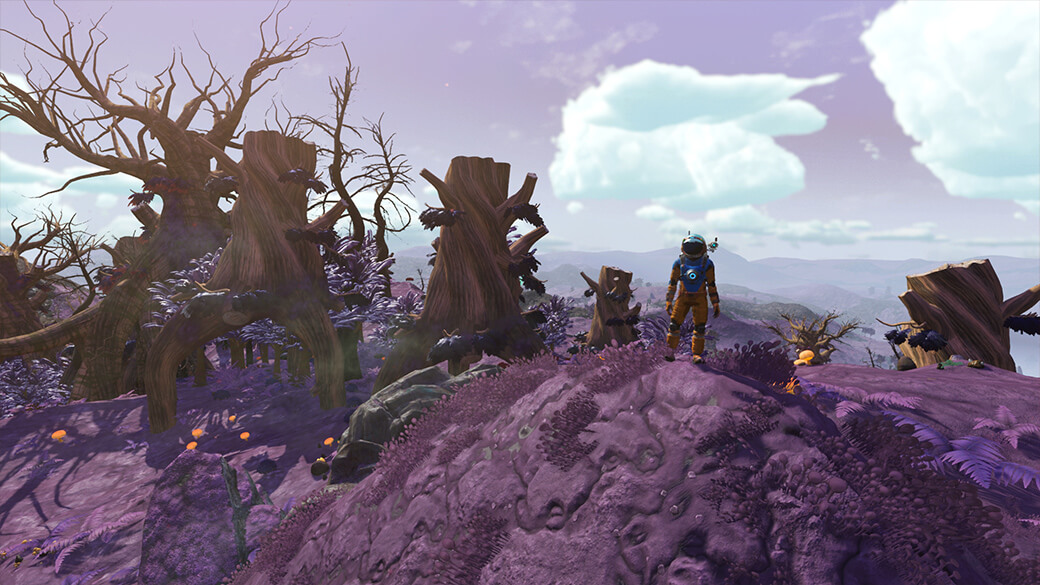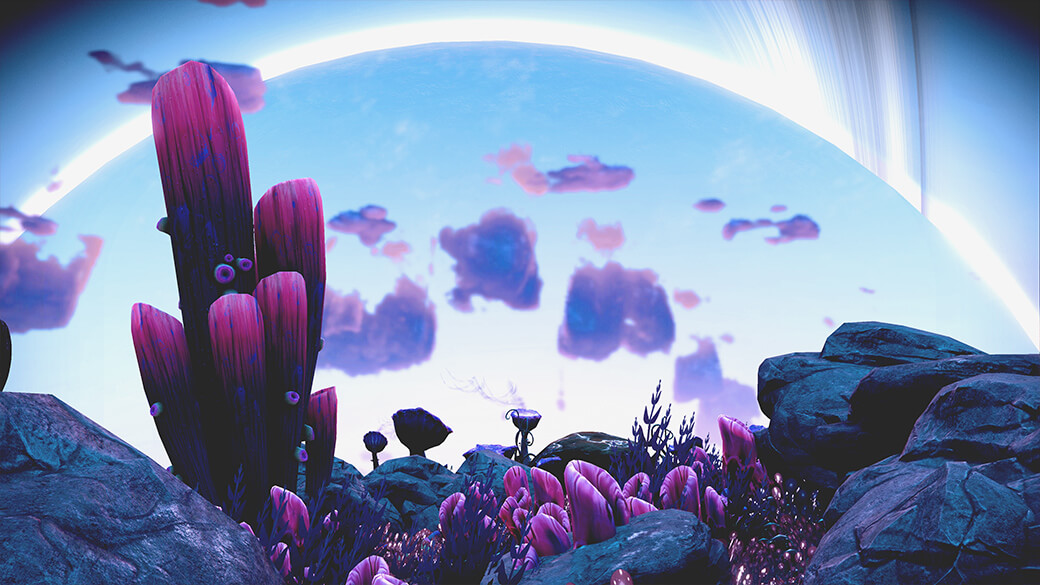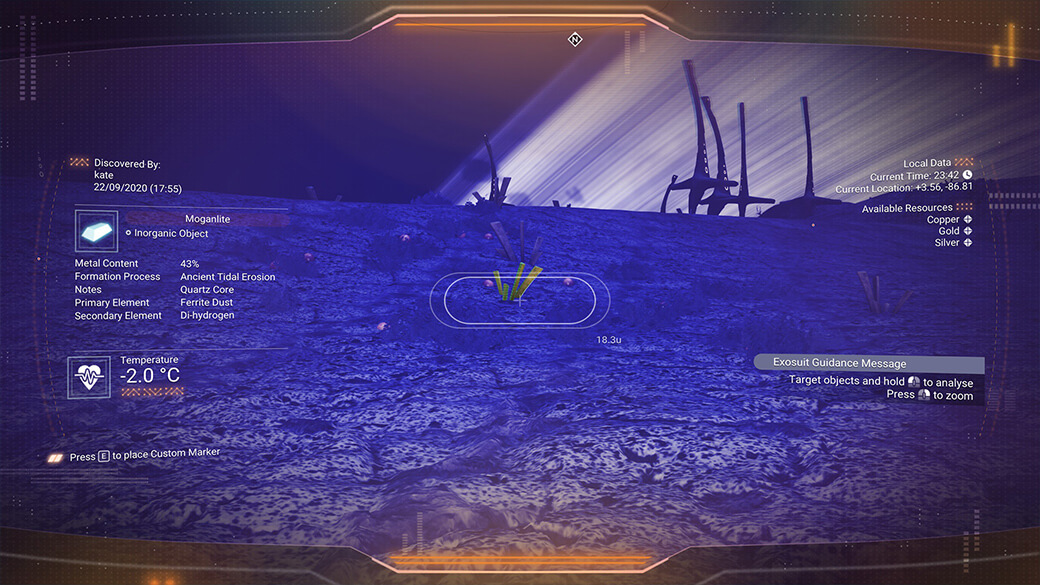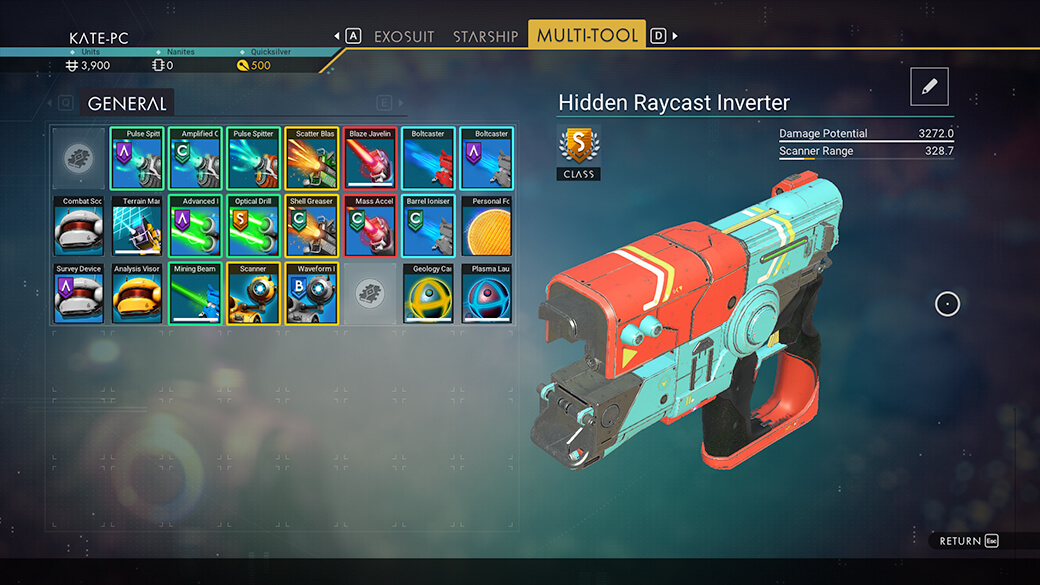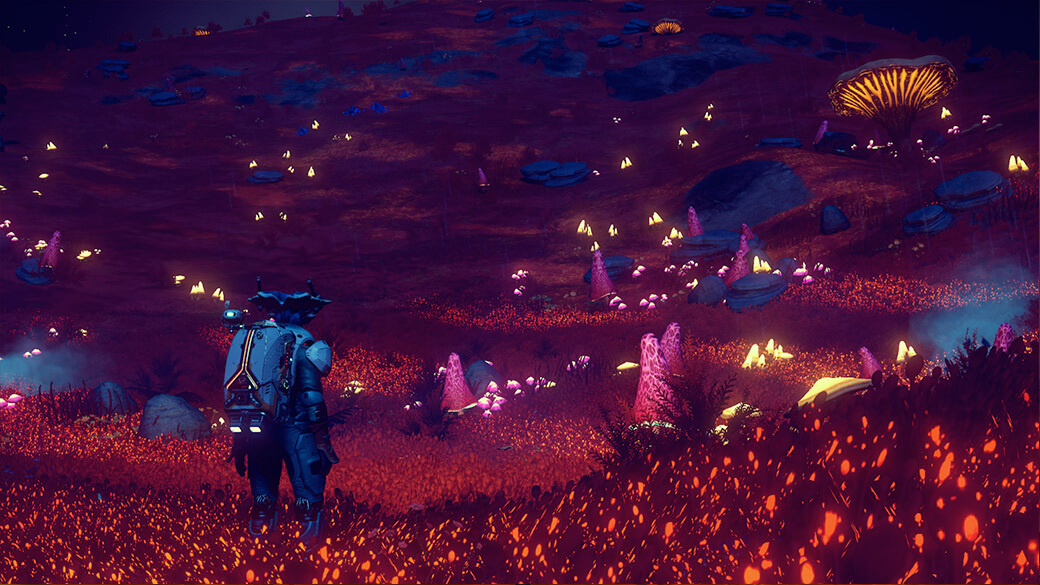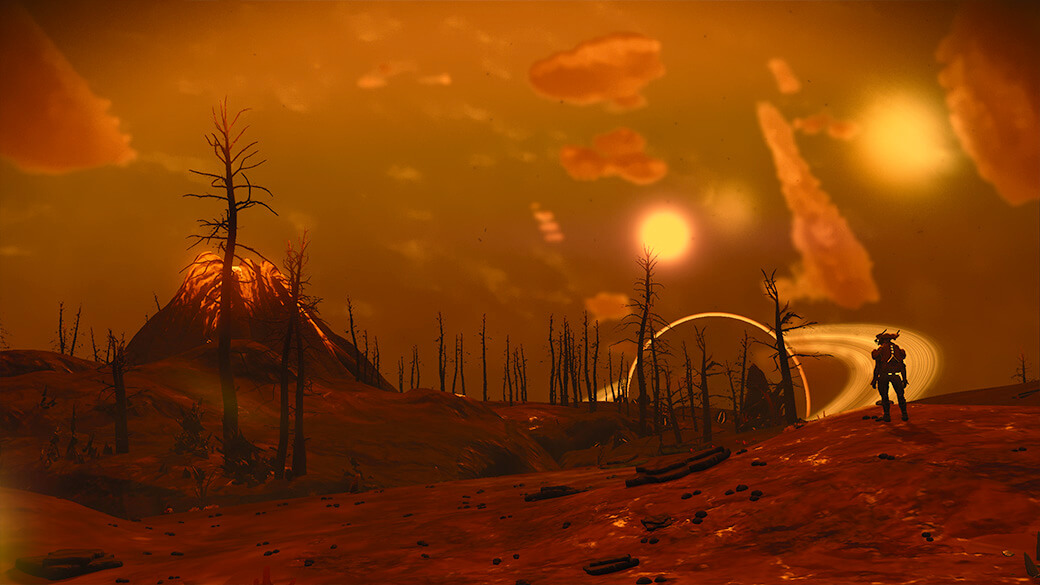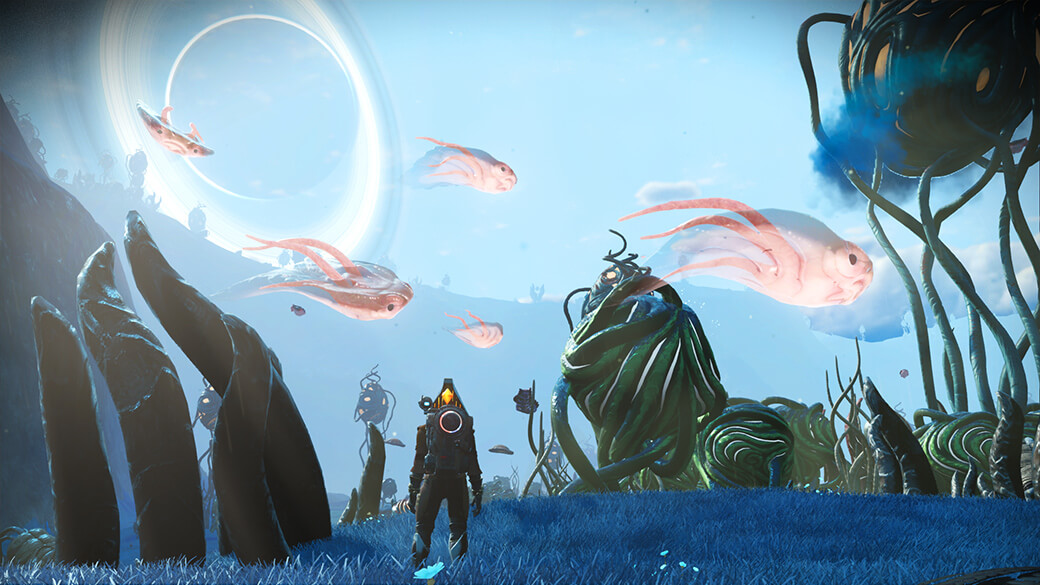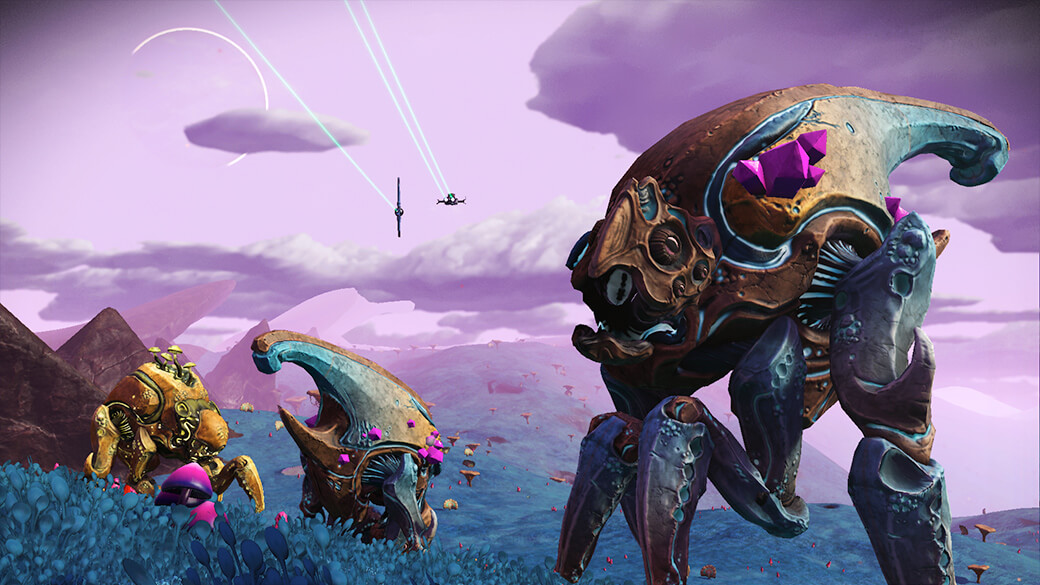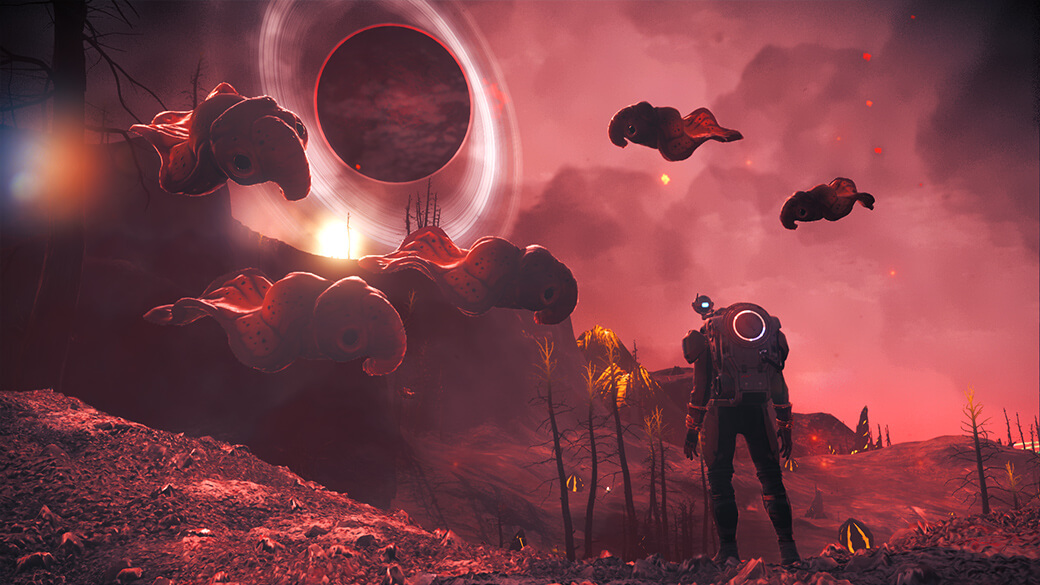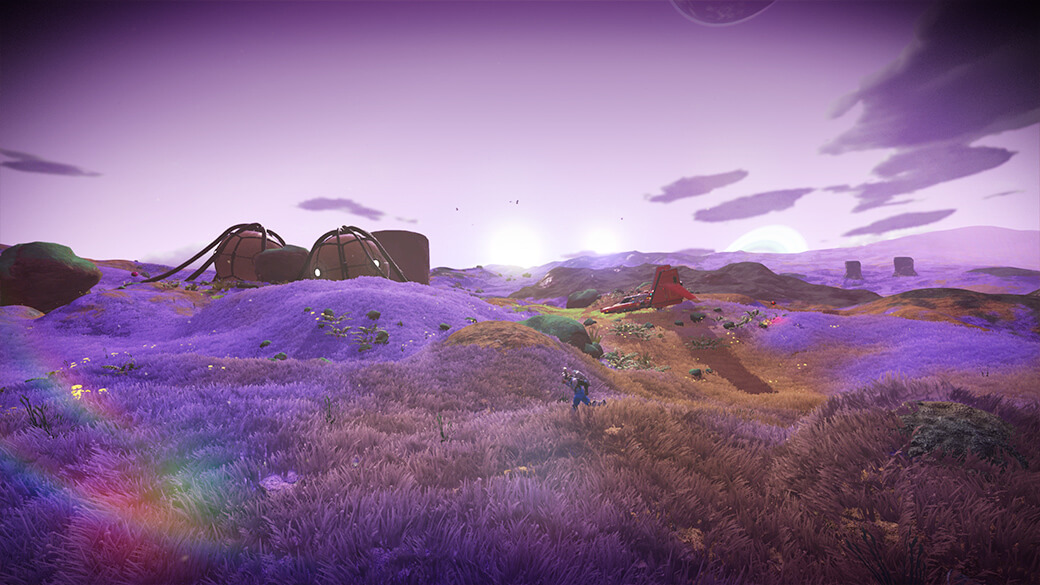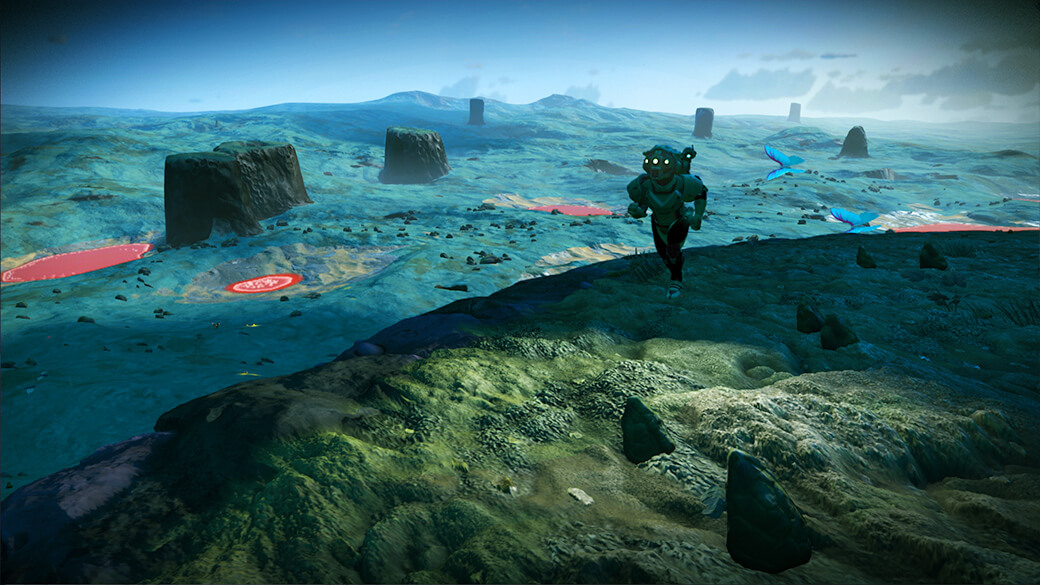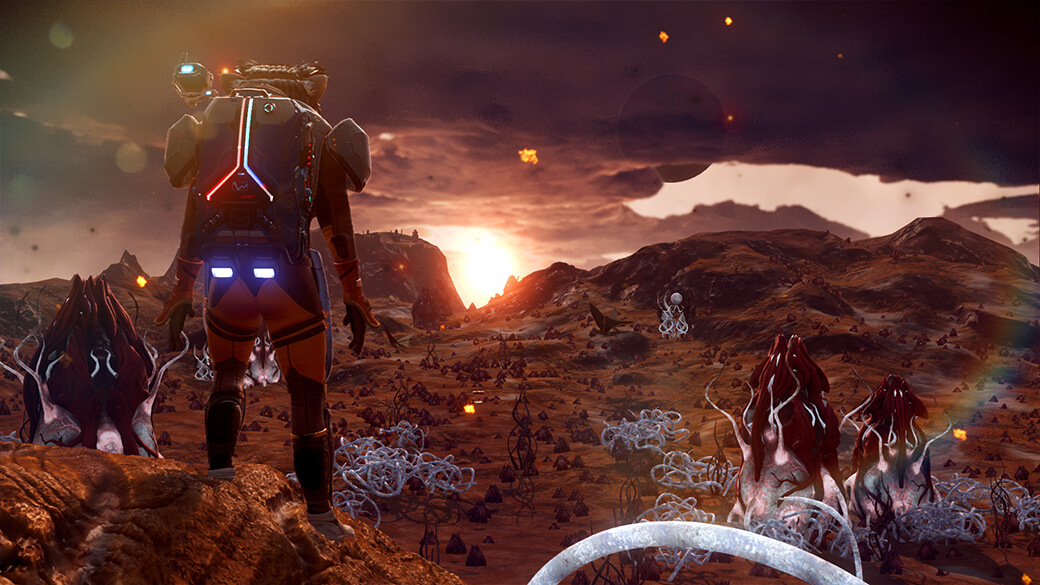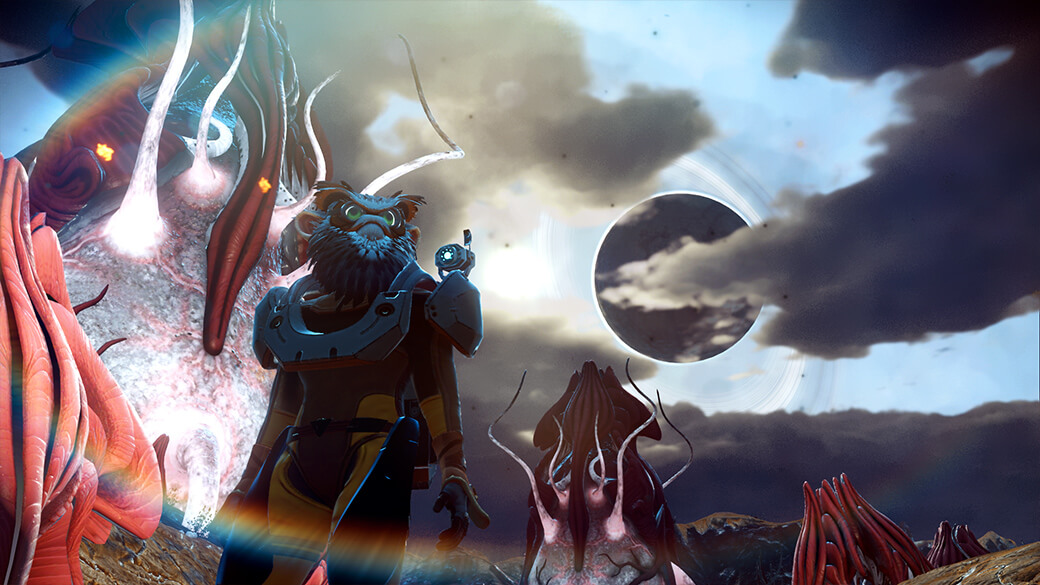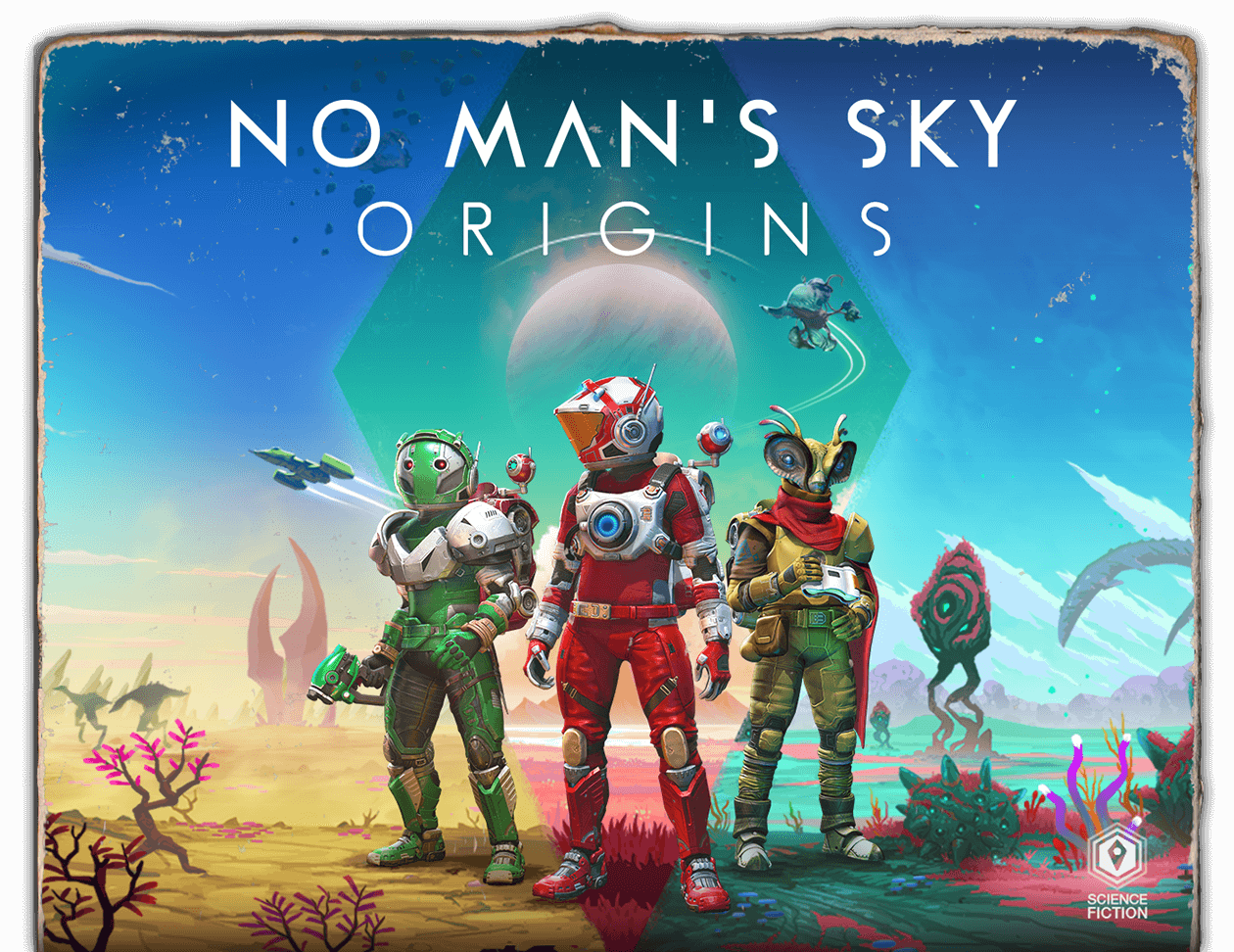

Origins: Introducing Update 3.0
Update 3.0, Origins, dramatically expands the universe of No Man’s Sky. Explore a stranger, richer and more varied universe, with deeper planetary diversity, dramatic new terrain, a host of new creatures, new weather conditions, colossal buildings, and much more.
Our journey continues.

New Planets
Existing solar systems have birthed new planets, creating millions of untouched new worlds to explore.
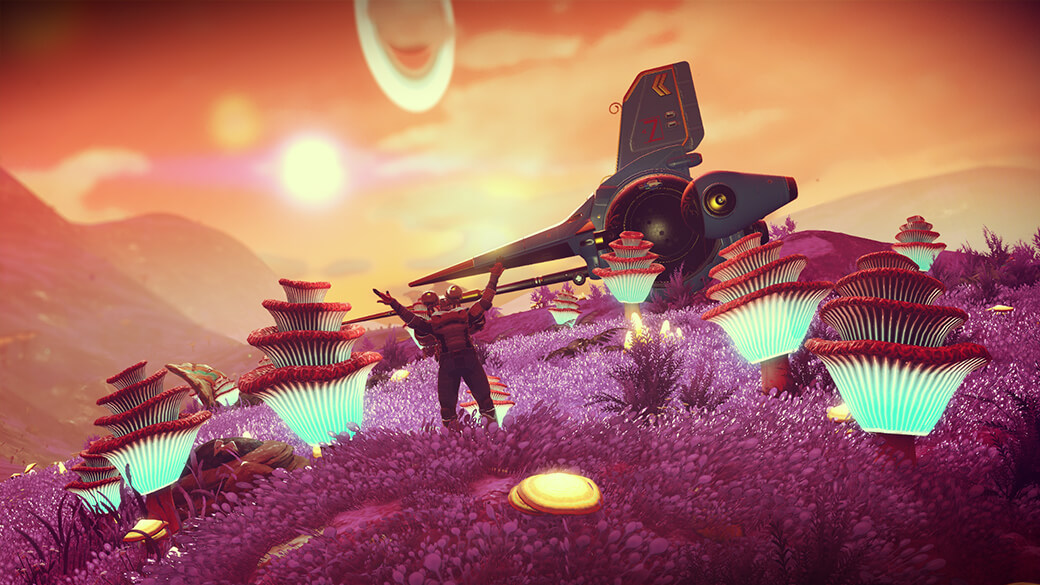
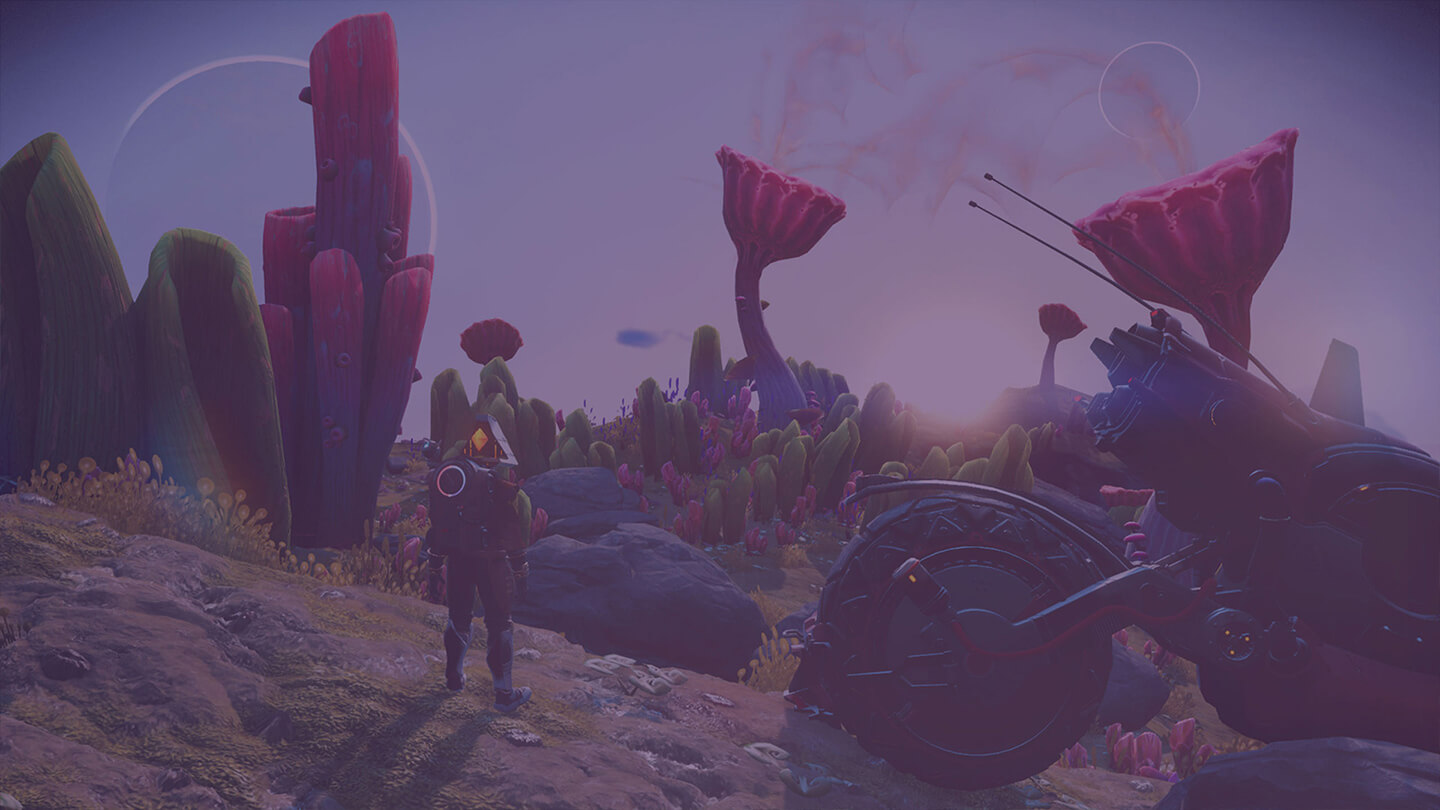
Binary and Ternary Stars
Some rare systems are now home to multiple stars, creating stunning new patterns in the sky.
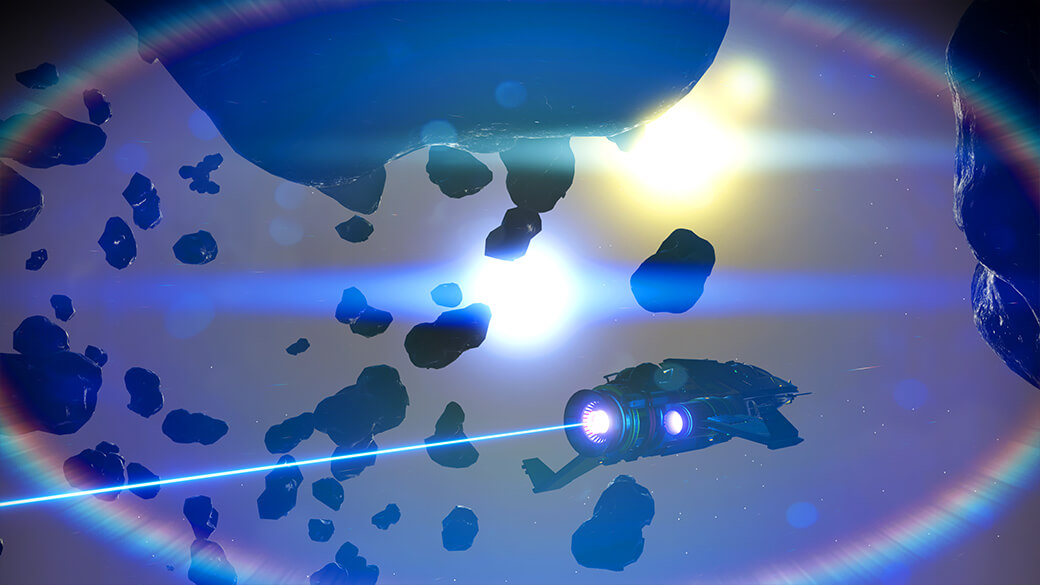
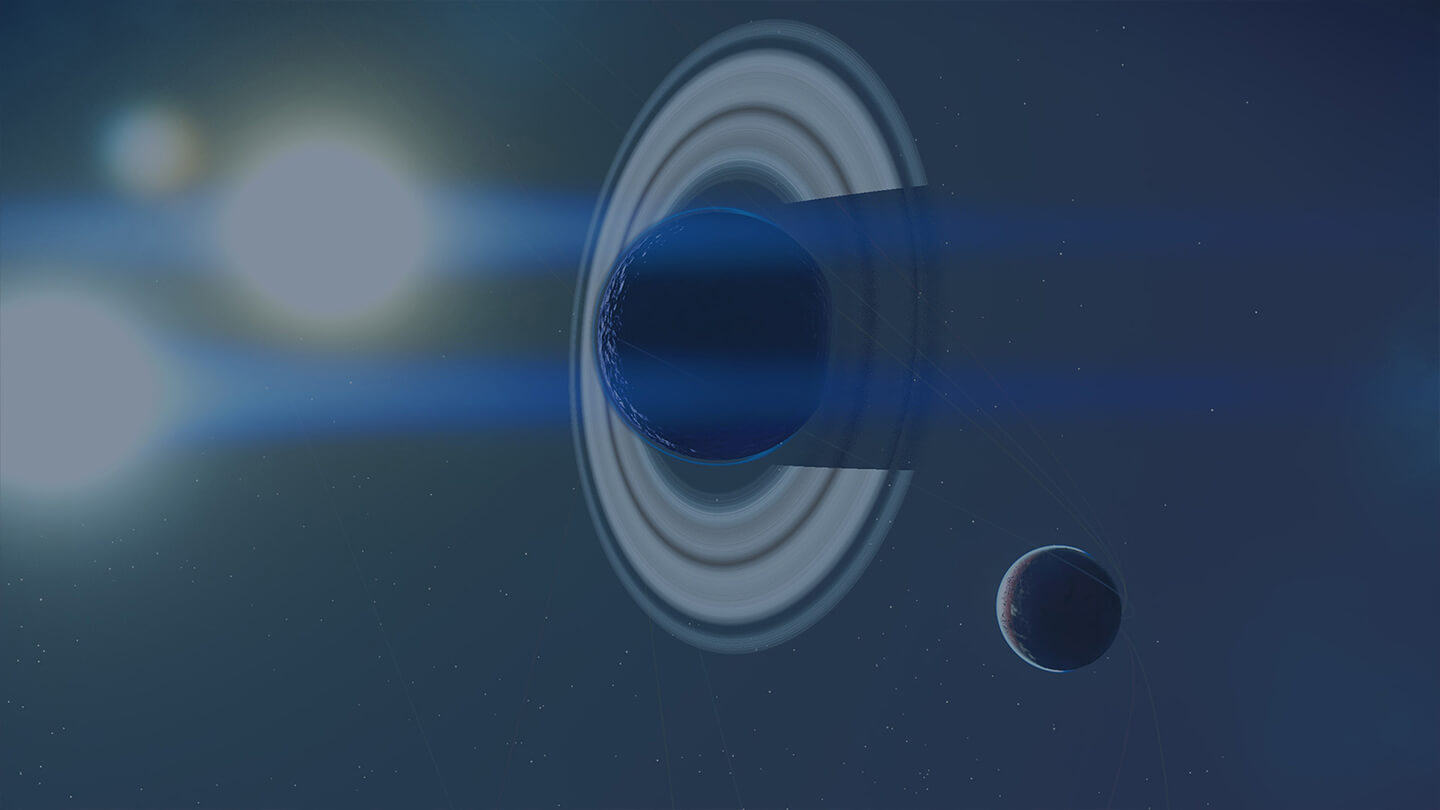
Dramatic Landscapes
These new worlds have vast, sweeping terrain. Their mountains and vistas are on a colossal new scale, giving shape to more dramatic, awe-inspiring scenery than ever before.
Whilst flora, fauna and atmospheric conditions have changed throughout the universe, existing worlds will retain their old character, allowing player bases to remain undisturbed.
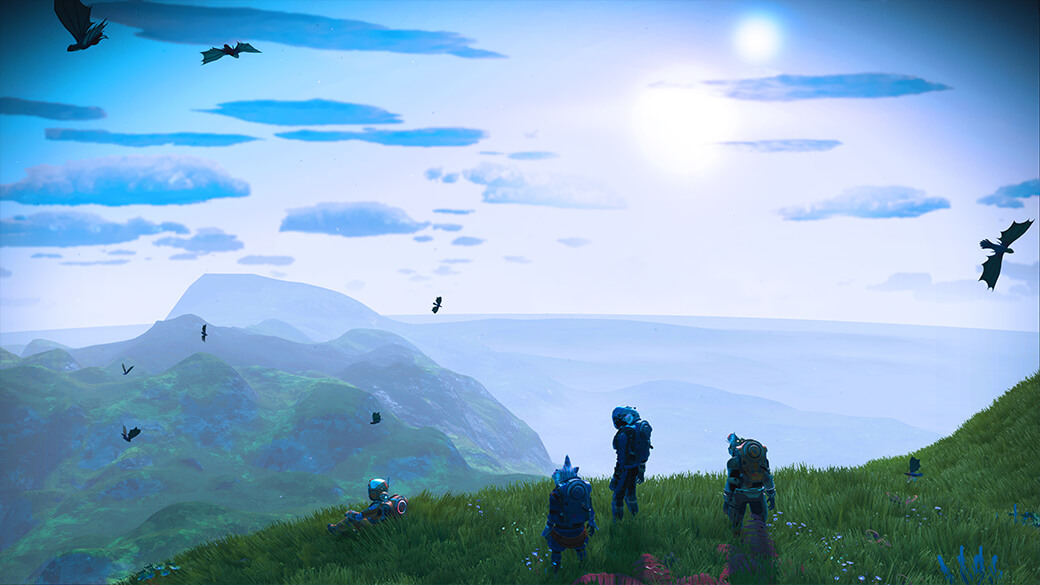
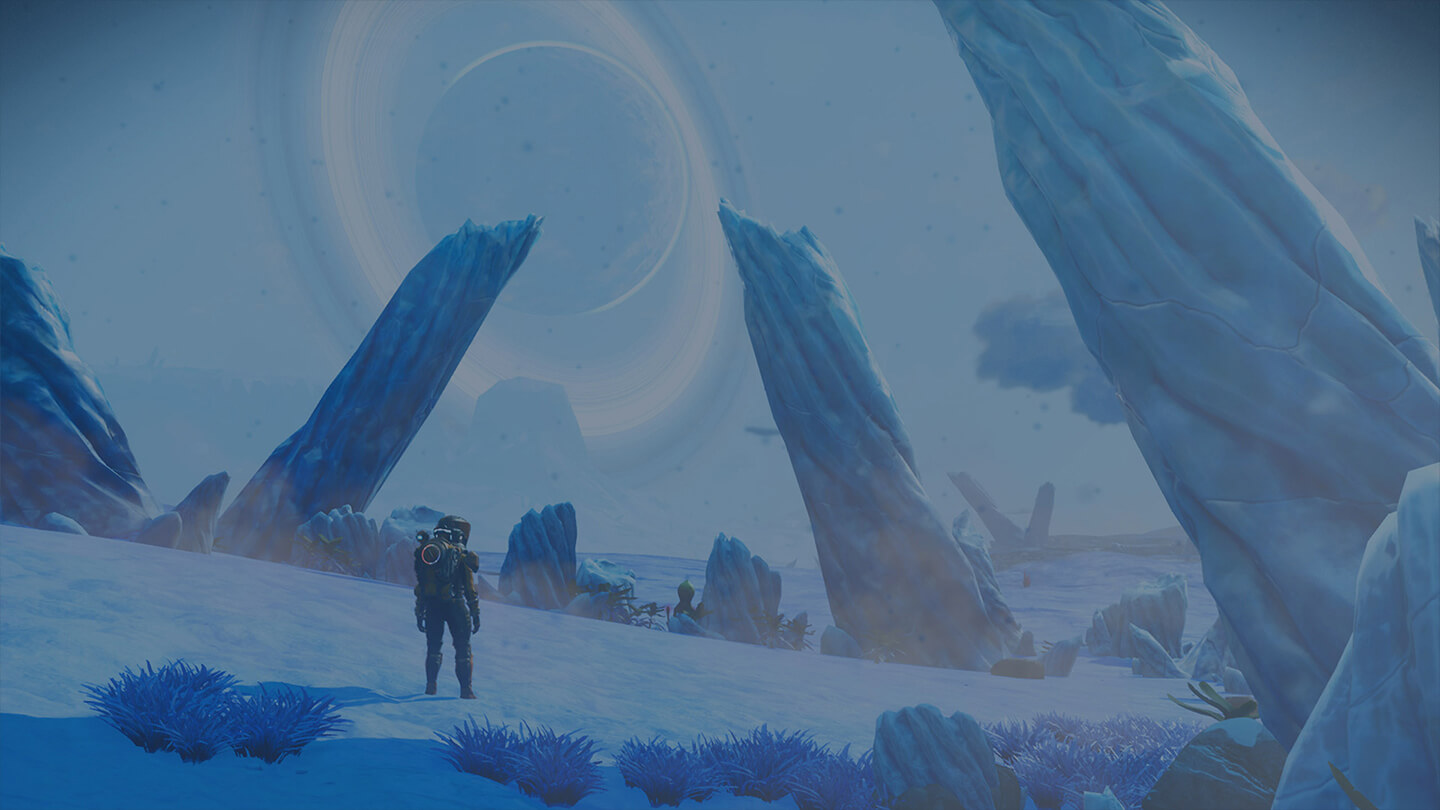
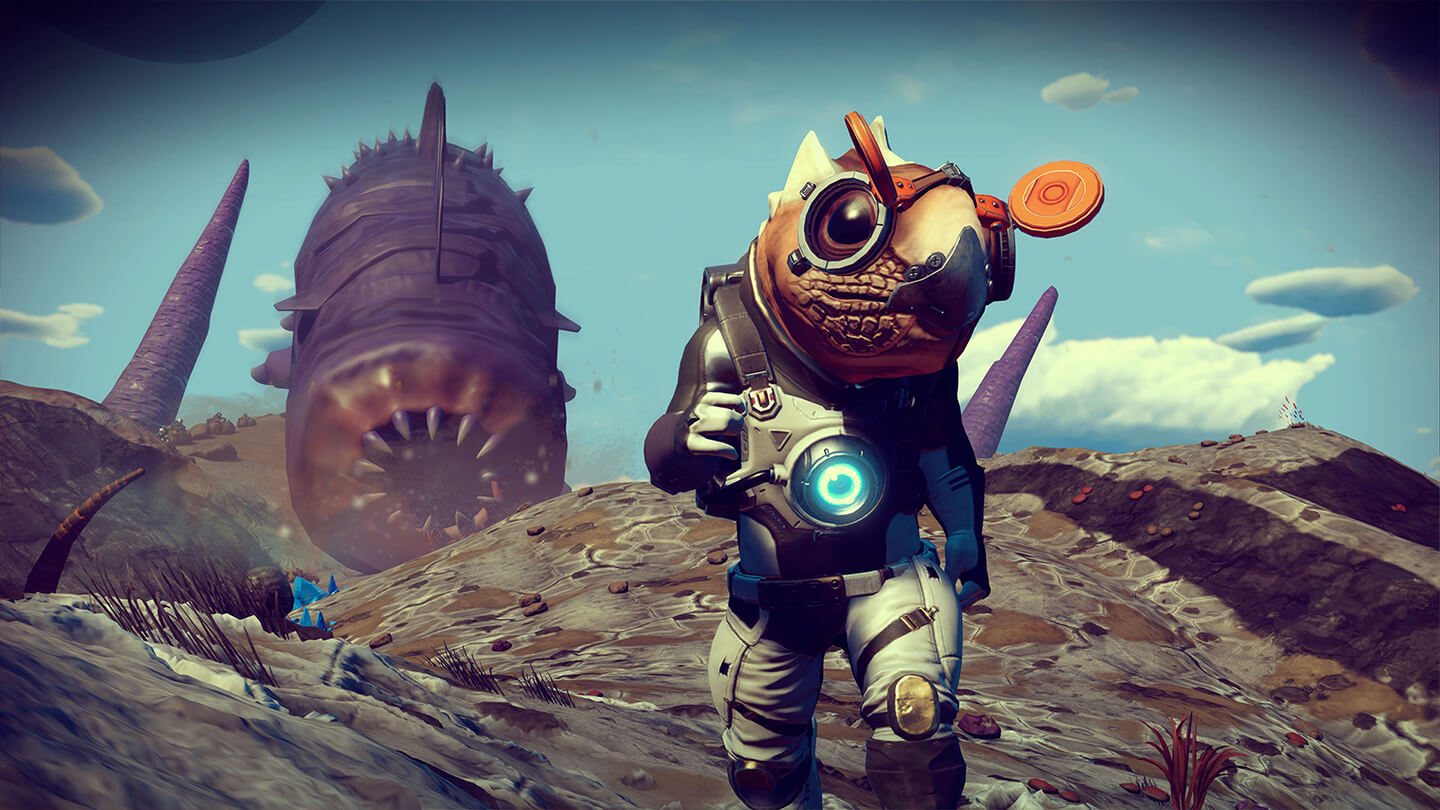
User Interface Refresh
Interface and menus have been totally overhauled with new colours and styles, for a fresh new aesthetic.
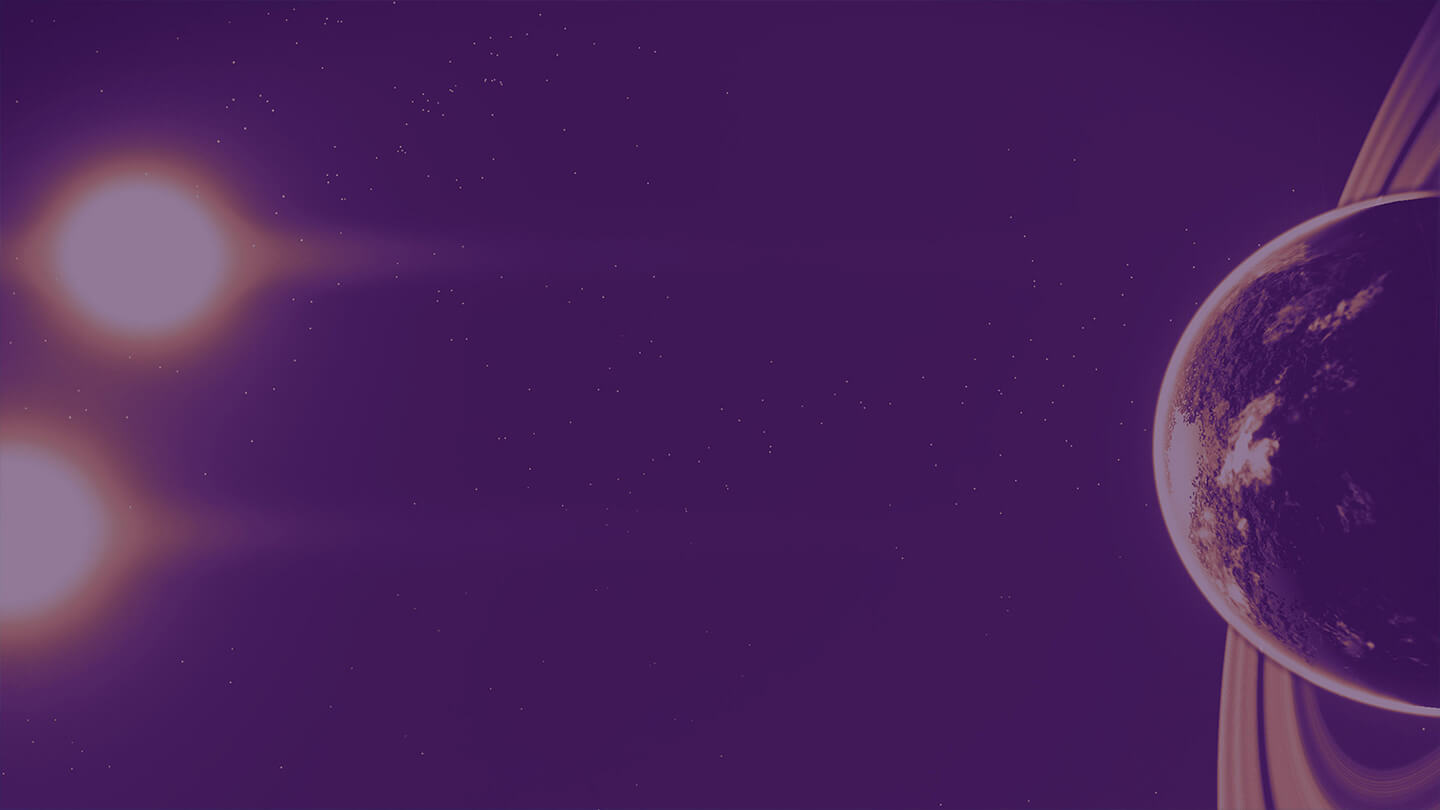
Richer Diversity
New life has been breathed into every planet in the universe. A huge range of never-before seen planetary flora and curiosities have been poured into the galaxy. Countless strange new combinations are out there, awaiting discovery…
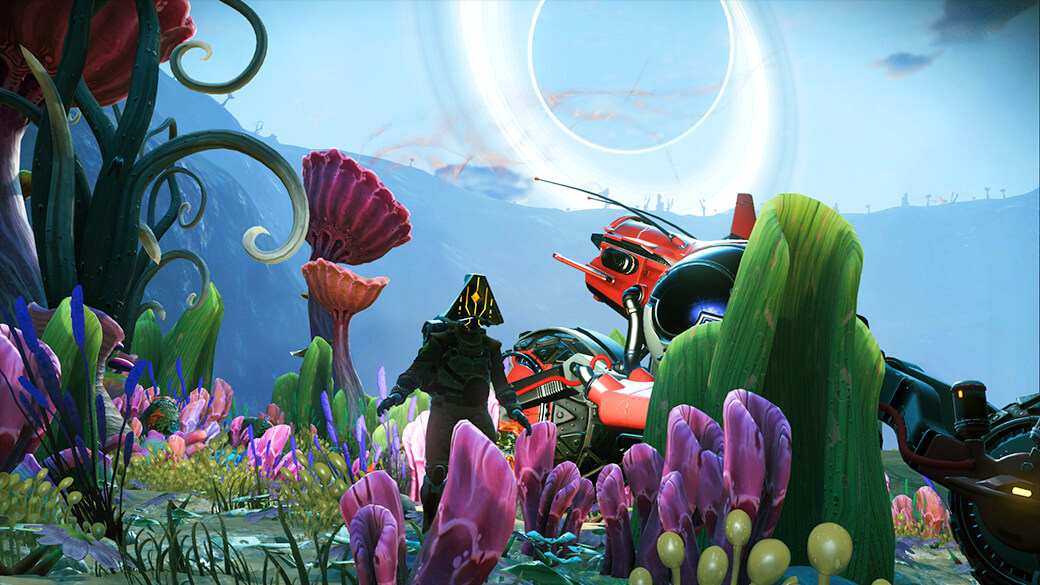
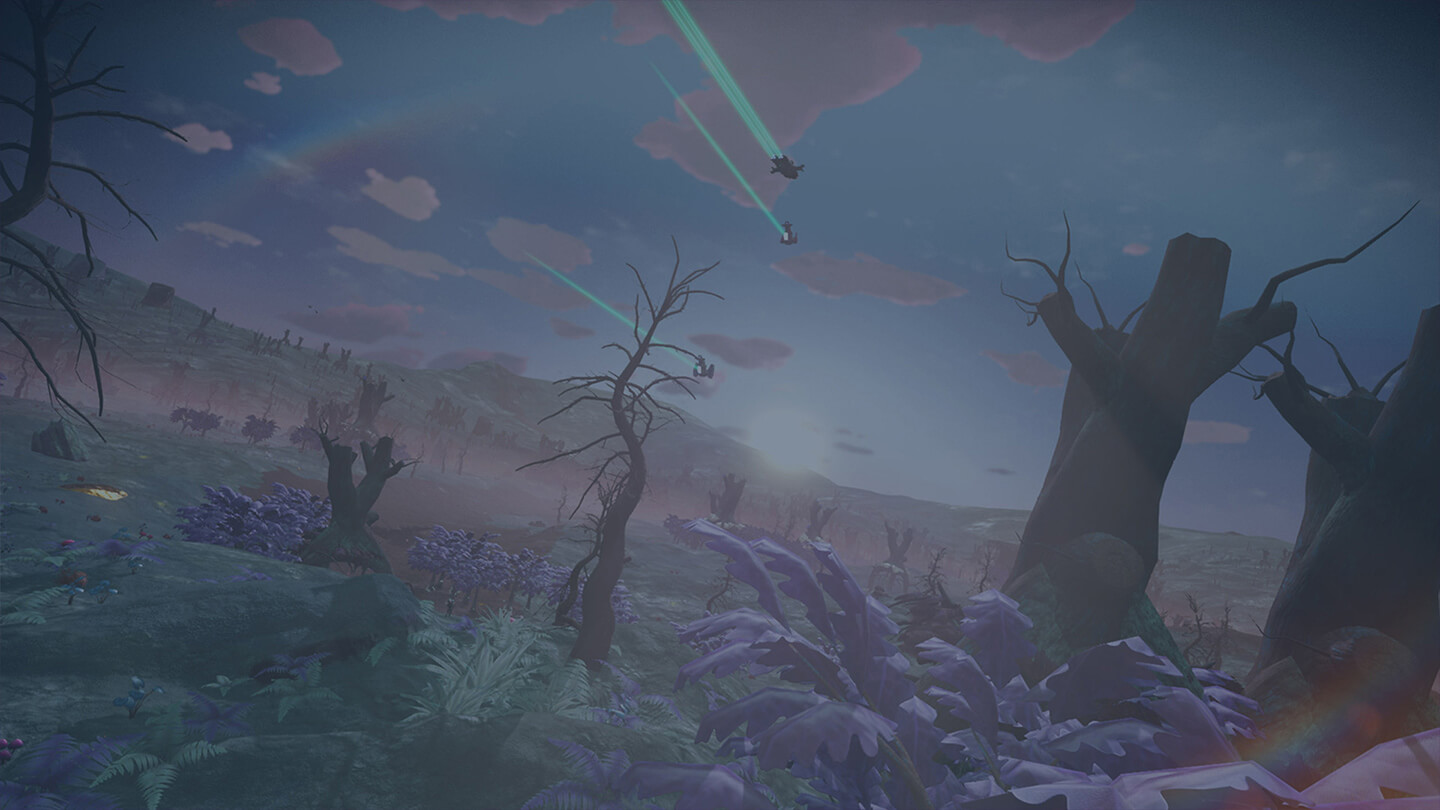
Alien Fauna
Discover strange new species of fauna. This alien wildlife can be encountered roaming the terrain, rolling along it, or even burrowing through it – and all may be harvested for edible produce.
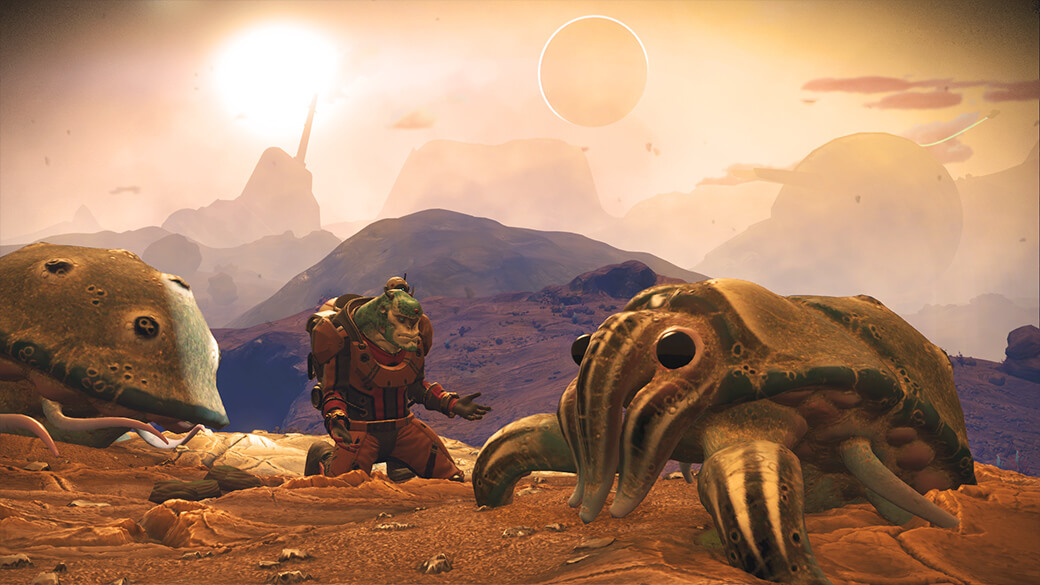
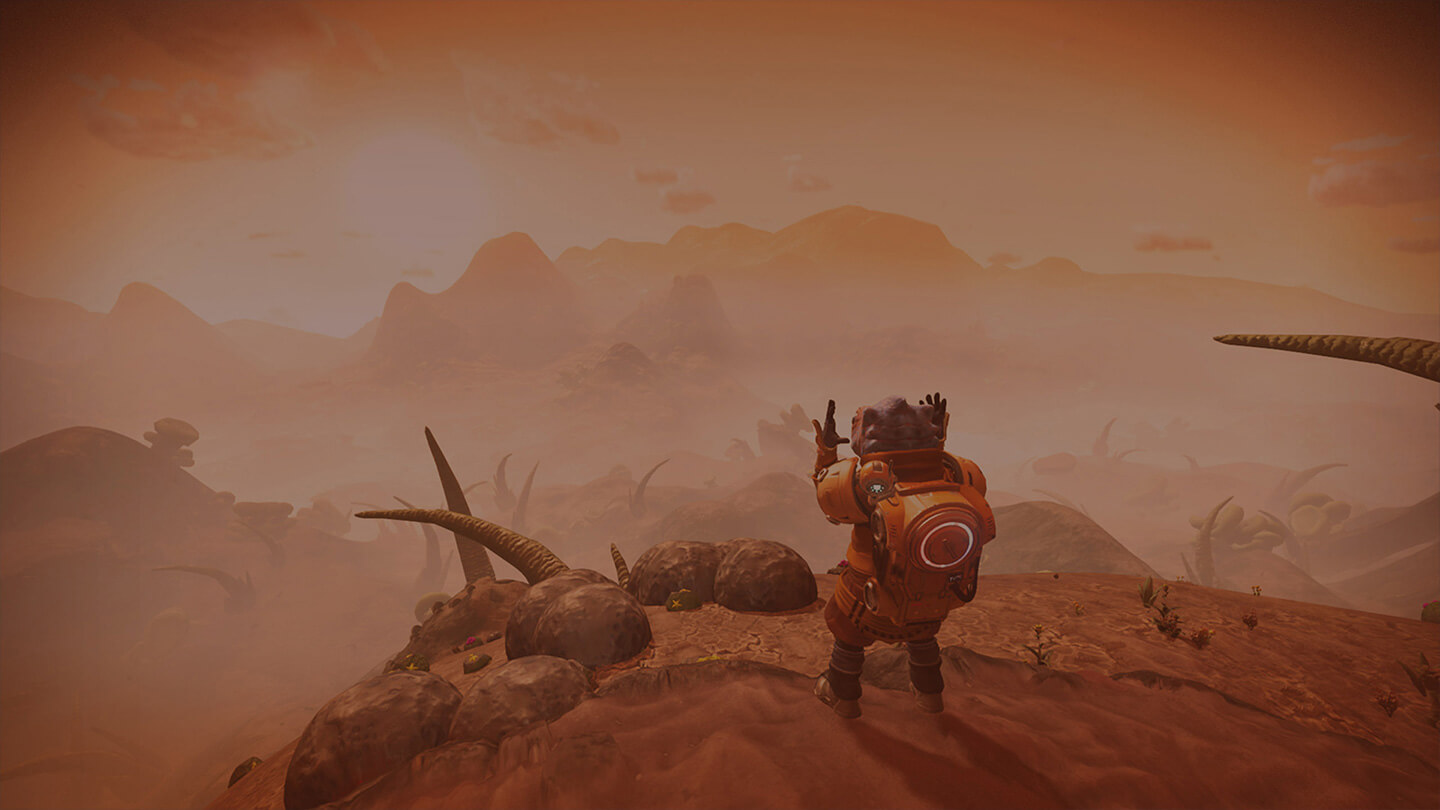
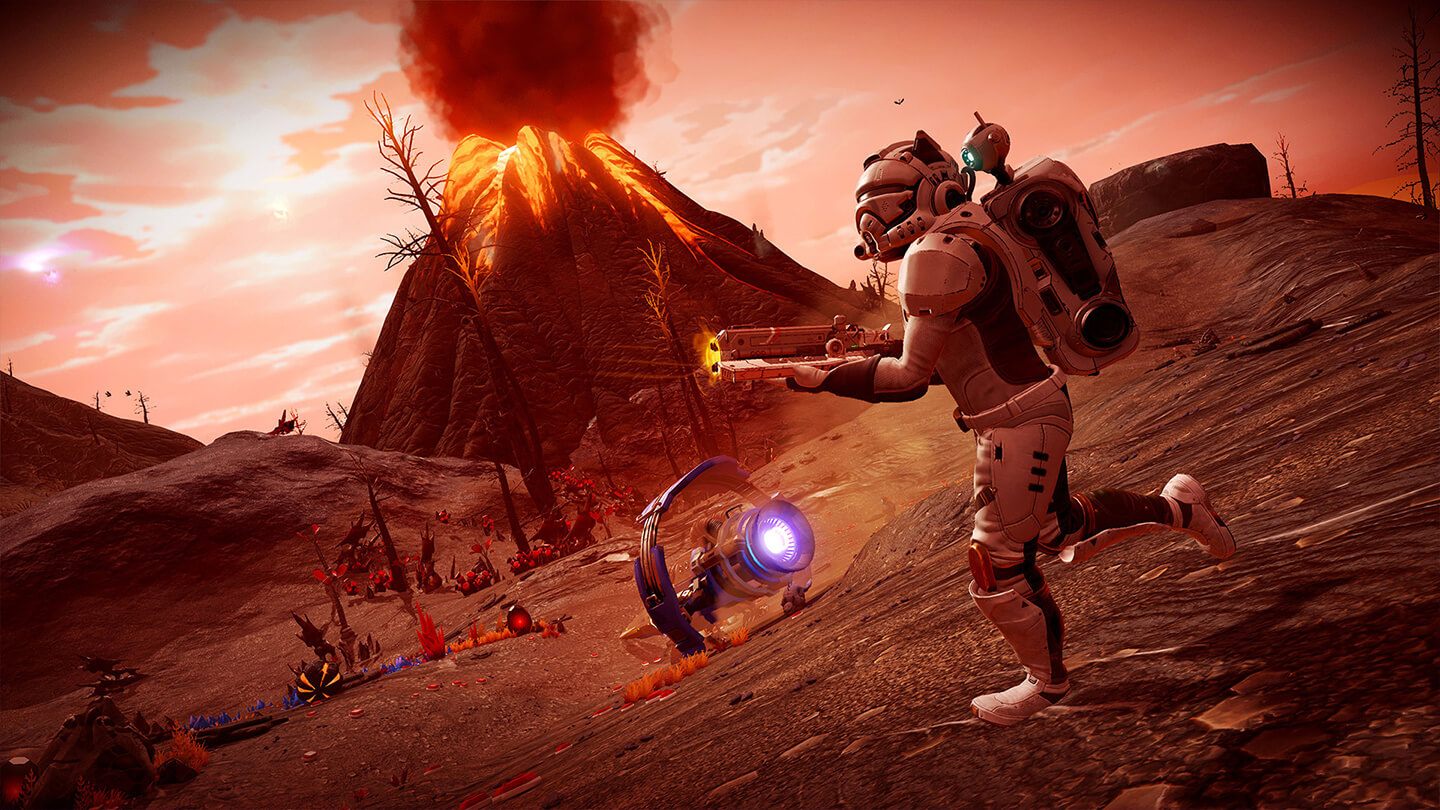
Cloud and Weather variety
Cloud rendering quality has been significantly improved, and the range of cloud cover has been expanded, creating more variety between clear skies and overcast planets.
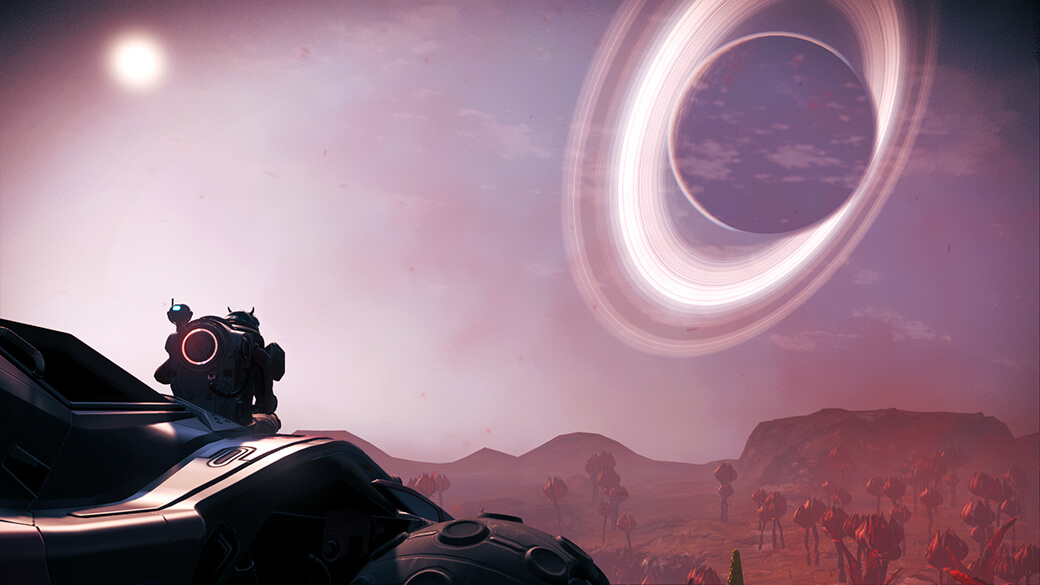
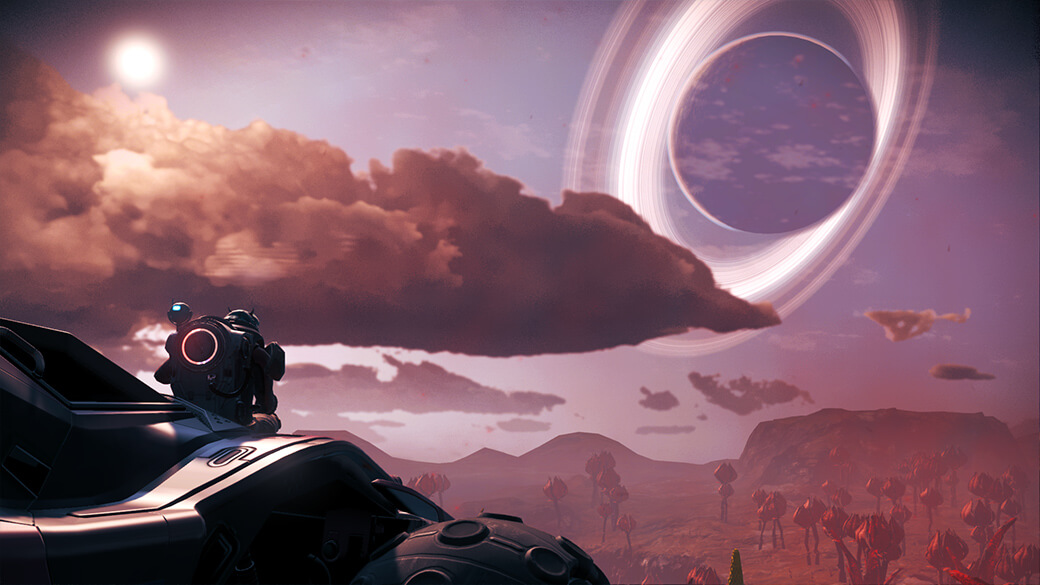
Cloud coverage and colour now varies over time, and the clouds seen from space now match the current atmospheric conditions of the planet below.
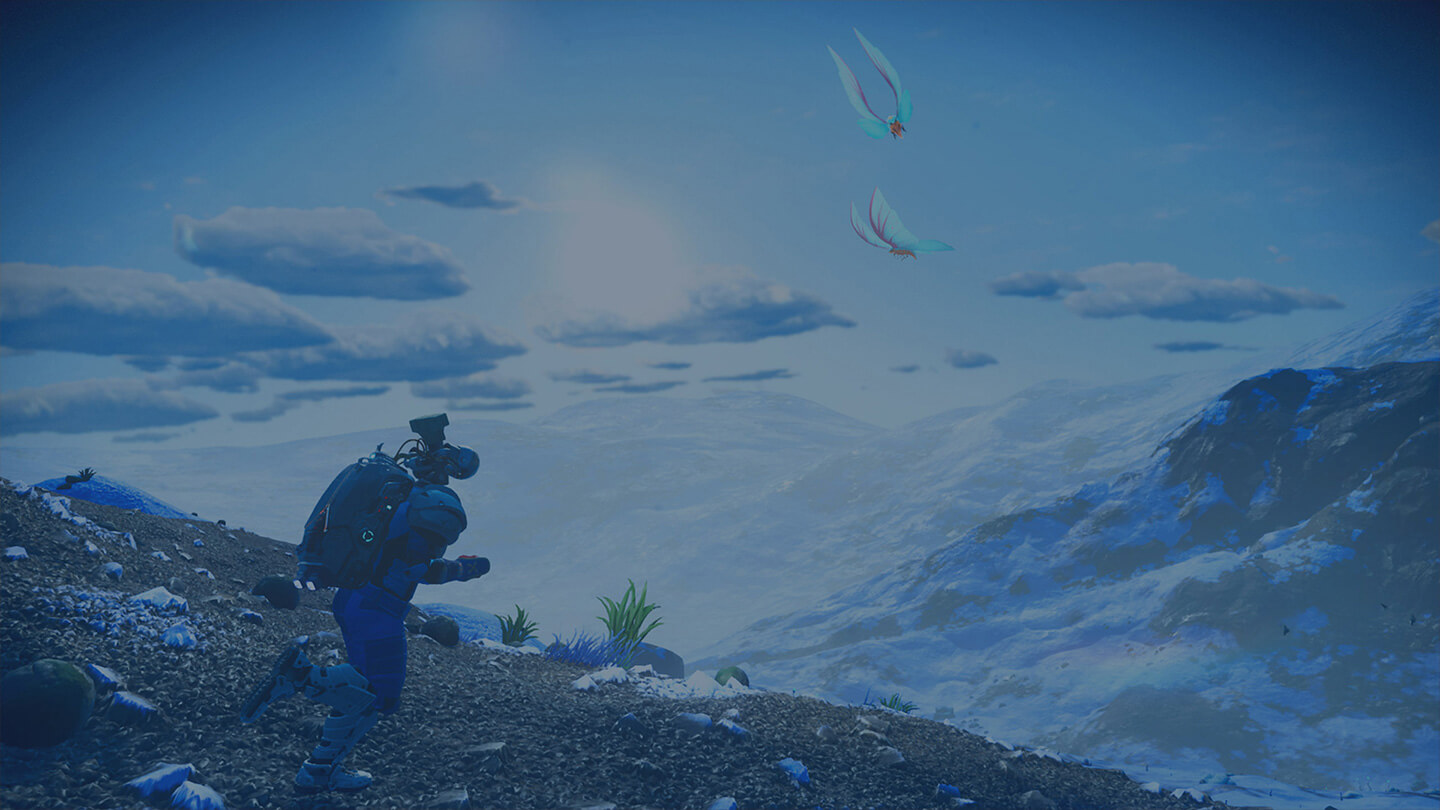
Marshes
A number of fertile worlds have formed swamps and marshes, thick with mist and luminous fungal growths.
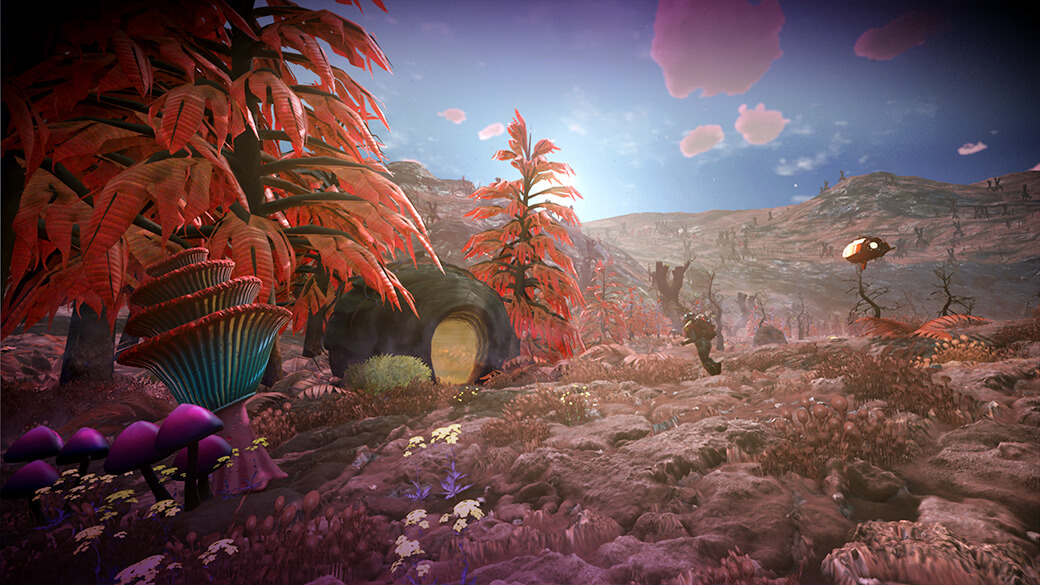
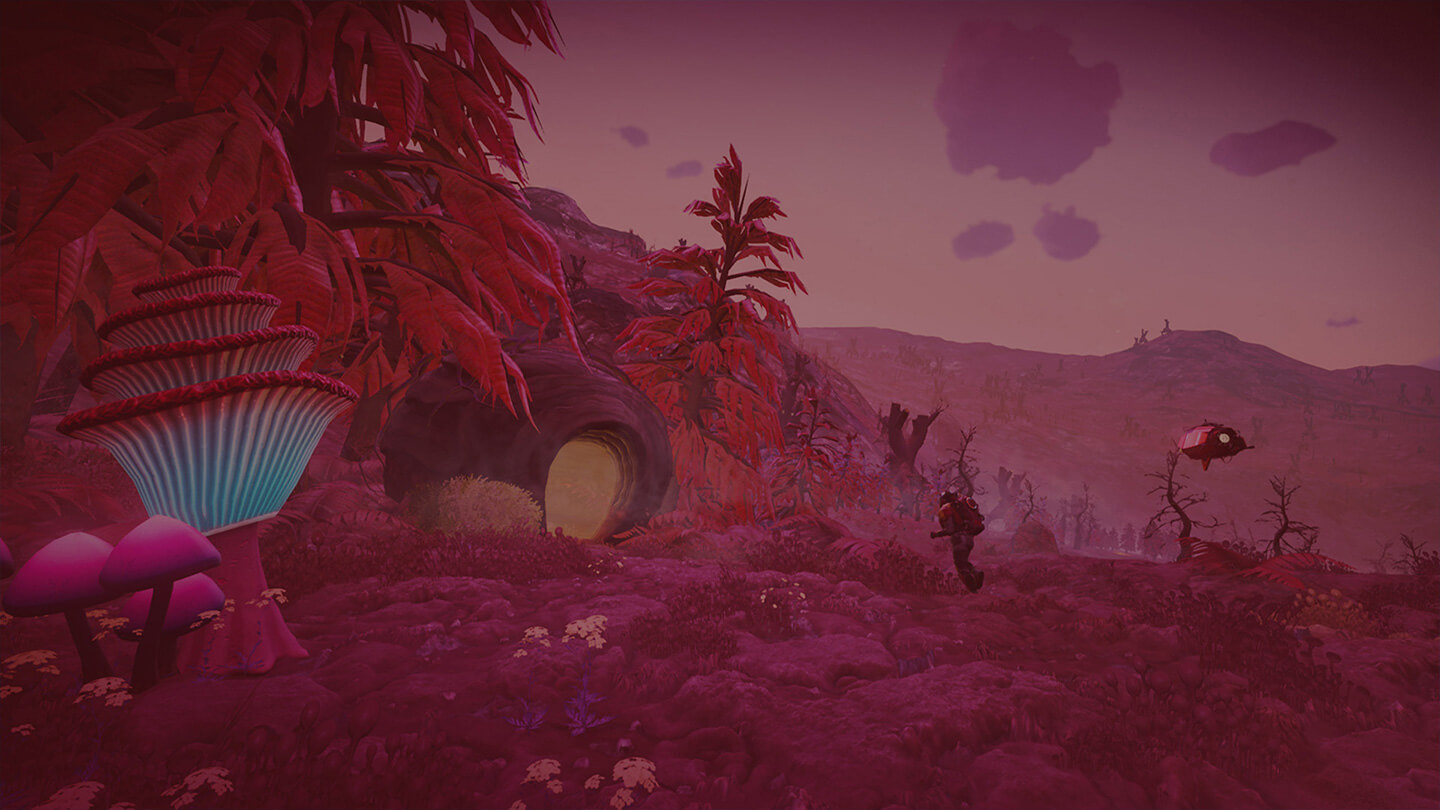
Increased Colour Variety
The palette of colours for planetary generation has been increased, creating more possible variations than ever before.
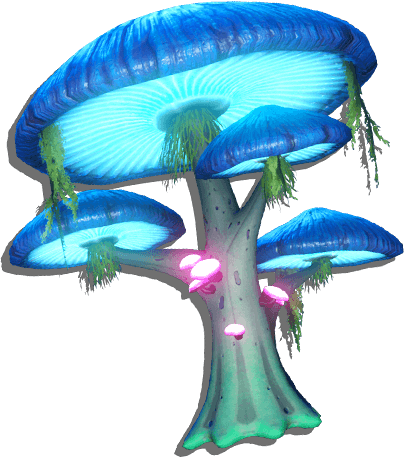

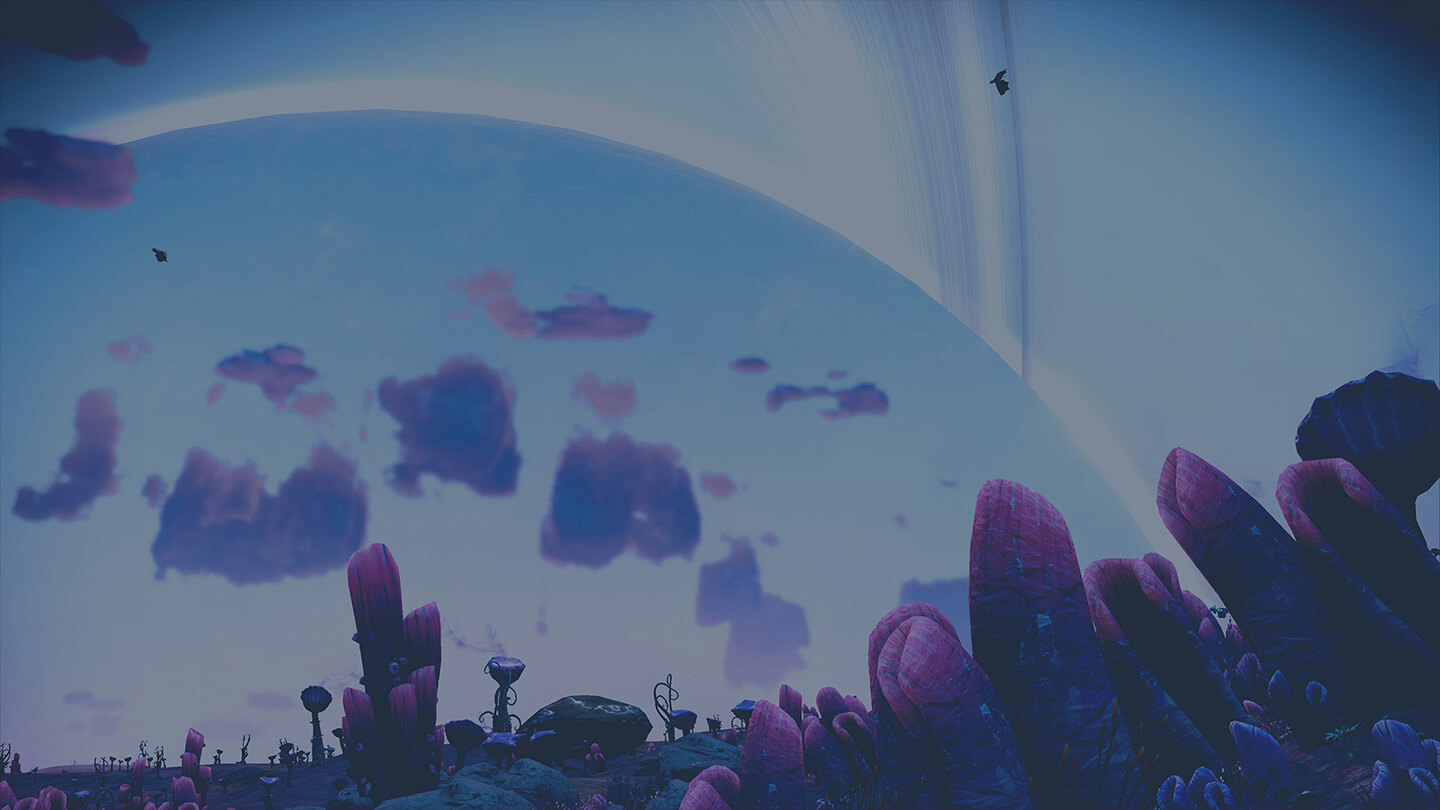
Improved Teleporters
The teleporter interface has been improved. The UI is now consistent with the Space Anomaly teleporter, and now offers more information available about the target planet or system prior to warp.
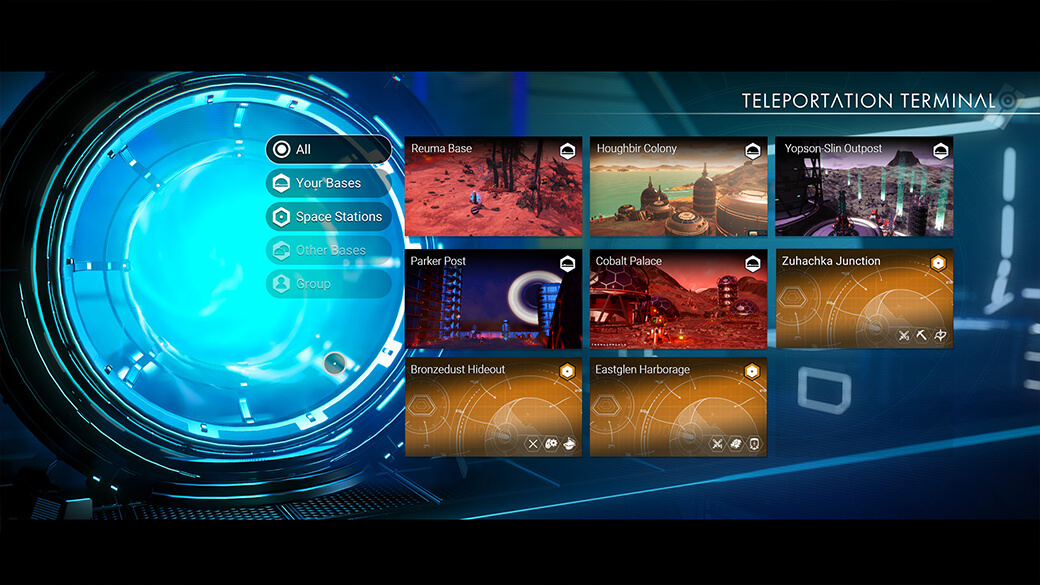
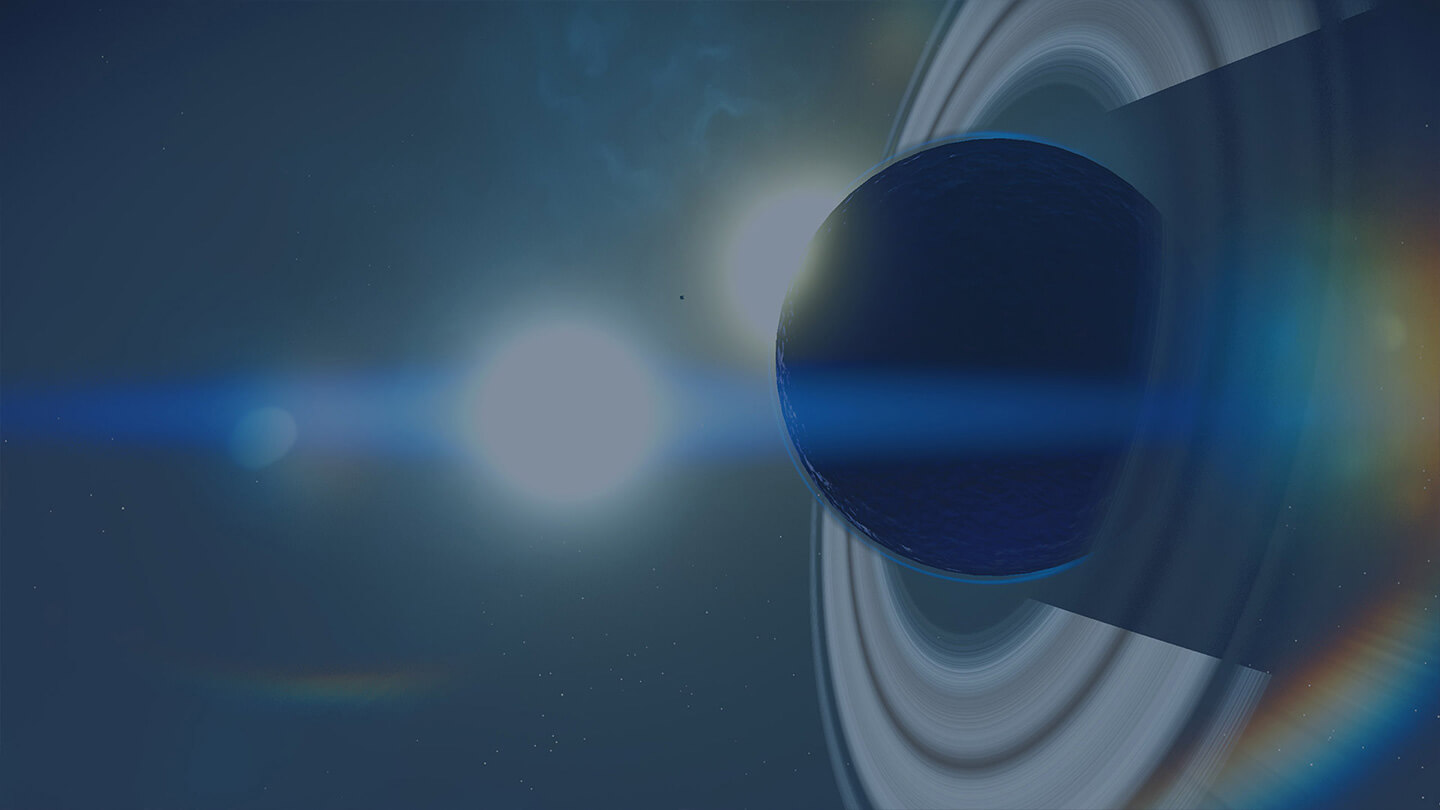
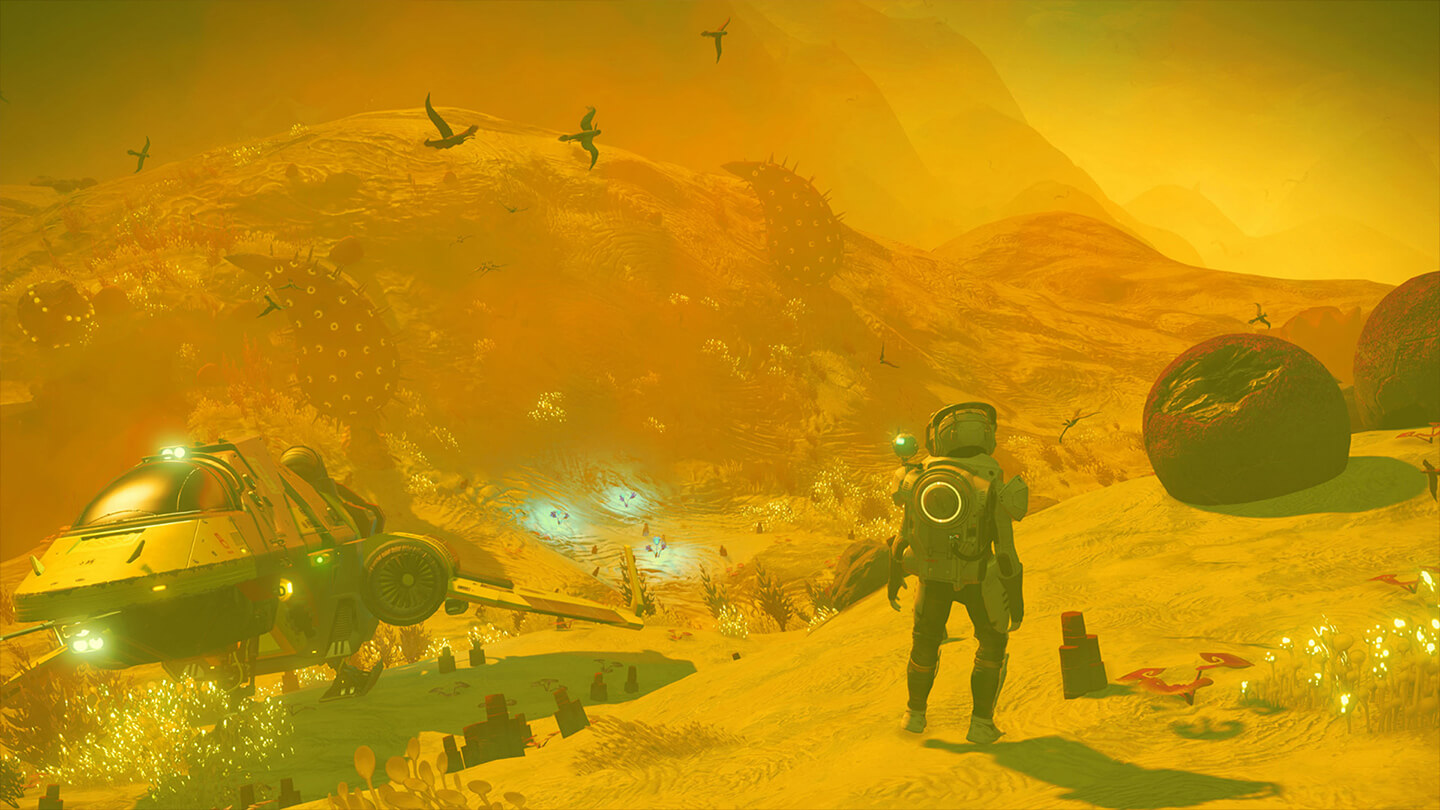
Photo Mode
Photo mode has been revamped, with new filters and increased control over clouds, fog, vignettes and depth of field.
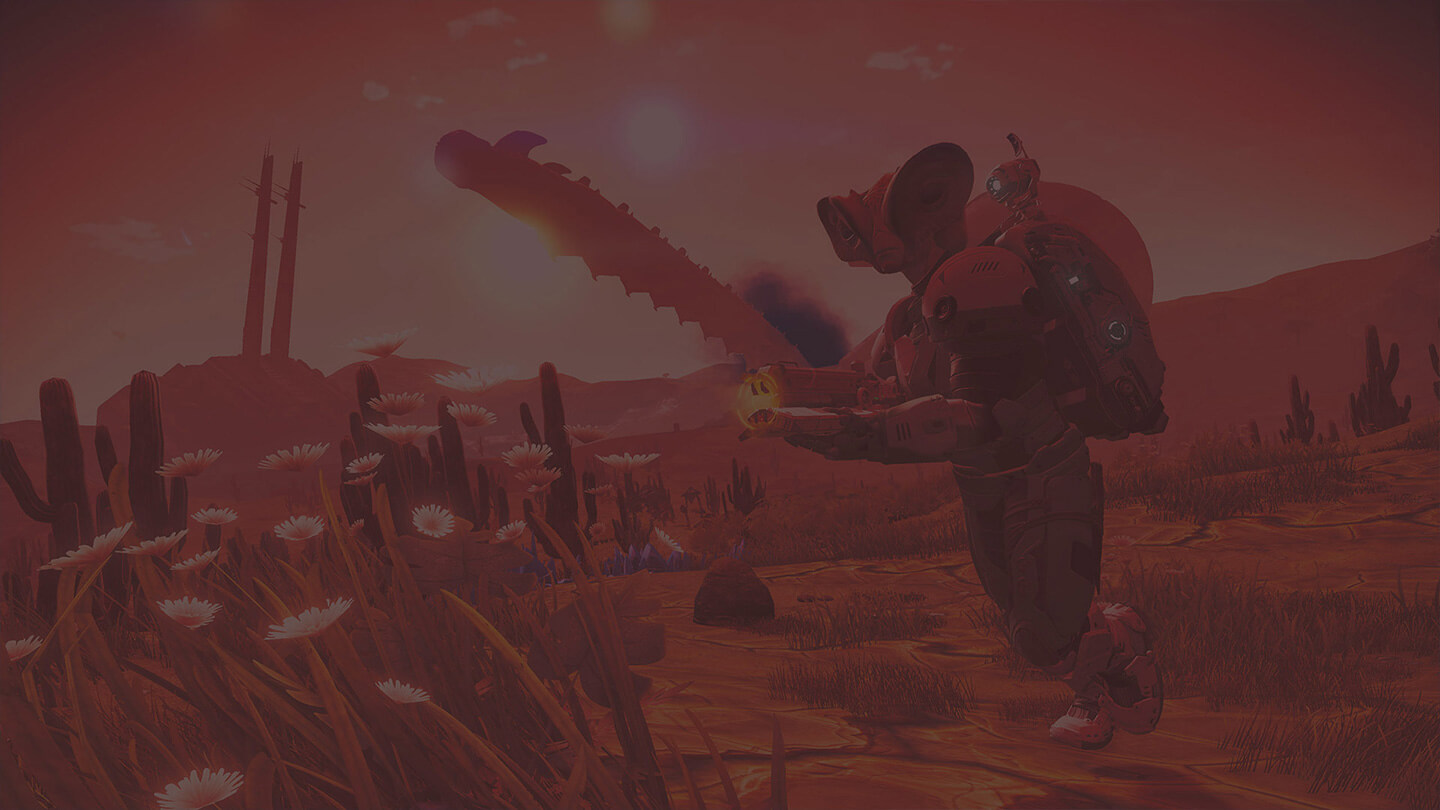
Colossal Archive Buildings
Enormous buildings have risen on planetary horizons, creating new hubs of alien life. These huge vaults are repositories of data, treasure, and directions to long-forgotten ruins.
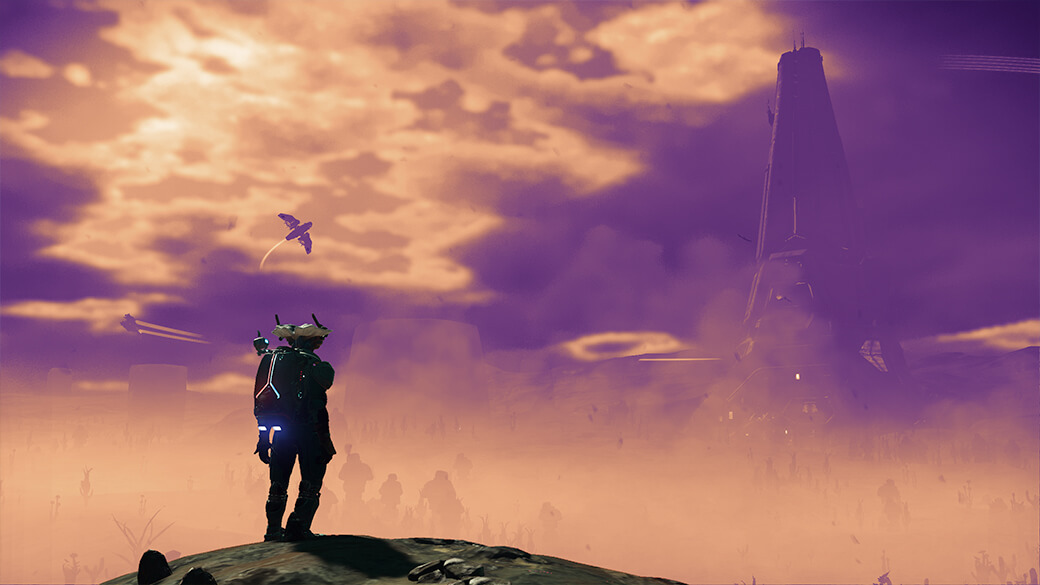
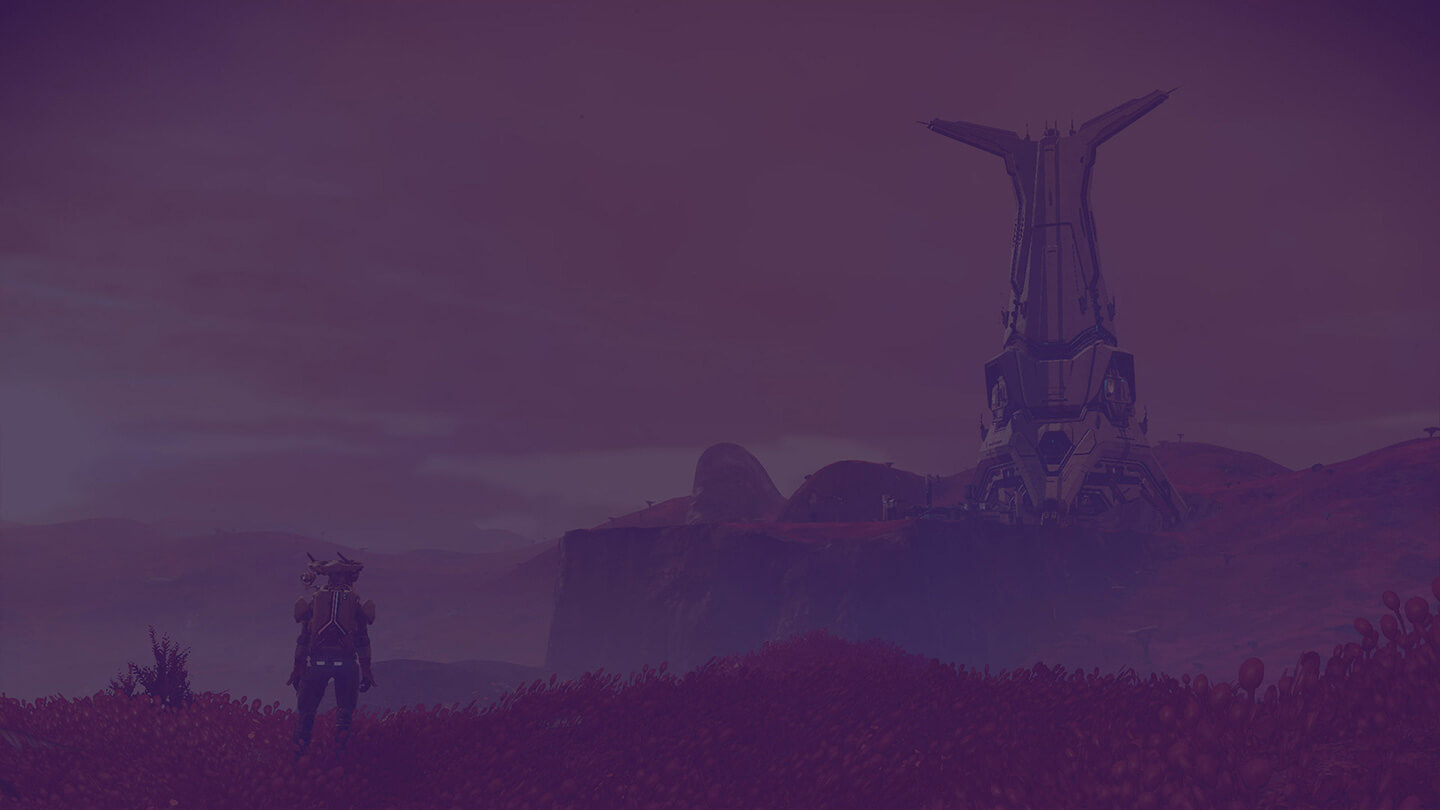
Historical Stories
Visit the colossal archive buildings to uncover new cultural and literary histories, hidden away by ancient alien civilisations.
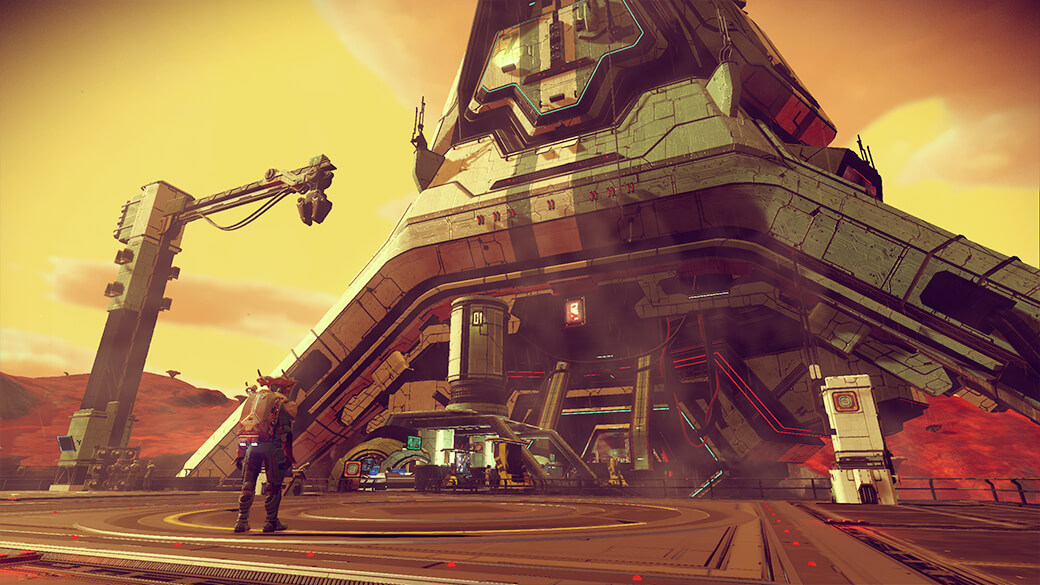

Infestations
A number of planets have become infested with anomalous lifeforms and vegetative growths. Take extreme caution while exploring such planets.
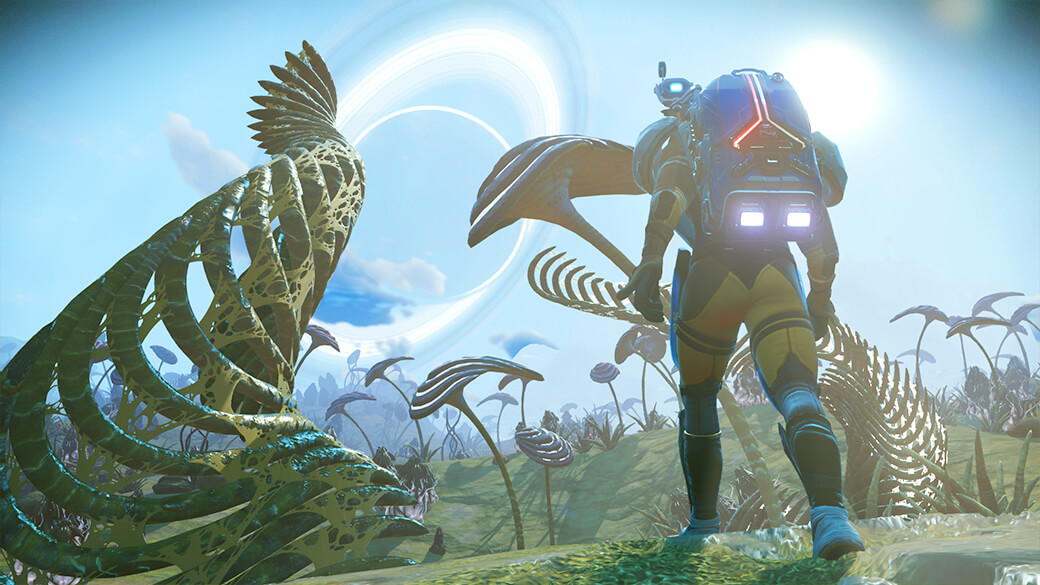

New Lighting Conditions
The range of atmospheric illumination has been broadened, generating more unique combinations of lighting conditions on planets.
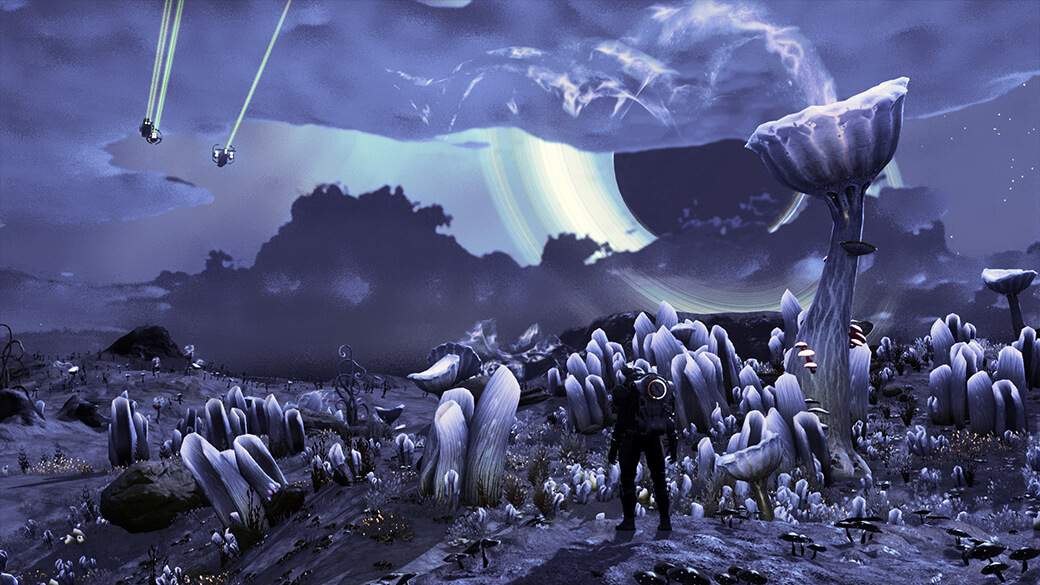

Anomalous Buildings
Abandoned and ancient settlements can be discovered on dead or anomalous planets, increasing the range of planets available for missions and exploration.
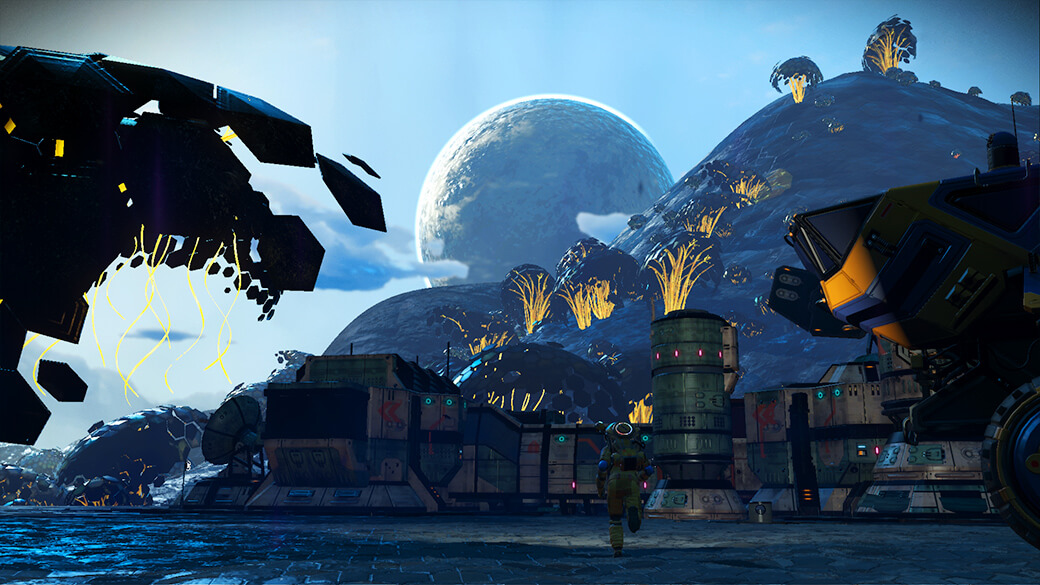


Volcanoes
Tectonic disruption has stimulated the molten cores of some planets, giving rise to active volcanic mountains.


Firestorms
Storms on extreme temperature worlds now sometimes ignite fire on the planet’s surface.

Storm Gameplay Effects
Advancements in Exosuit and Multi-Tool technology enable beneficial effects from storms.
Blizzards allow you to mine for longer with a cooled Mining Beam; sprint further in toxic storms with assistance from Exosuit gas processing technology; benefit from increased jetpack efficiency in superheated atmospheres; and mine additional substances during times of high radioactivity.
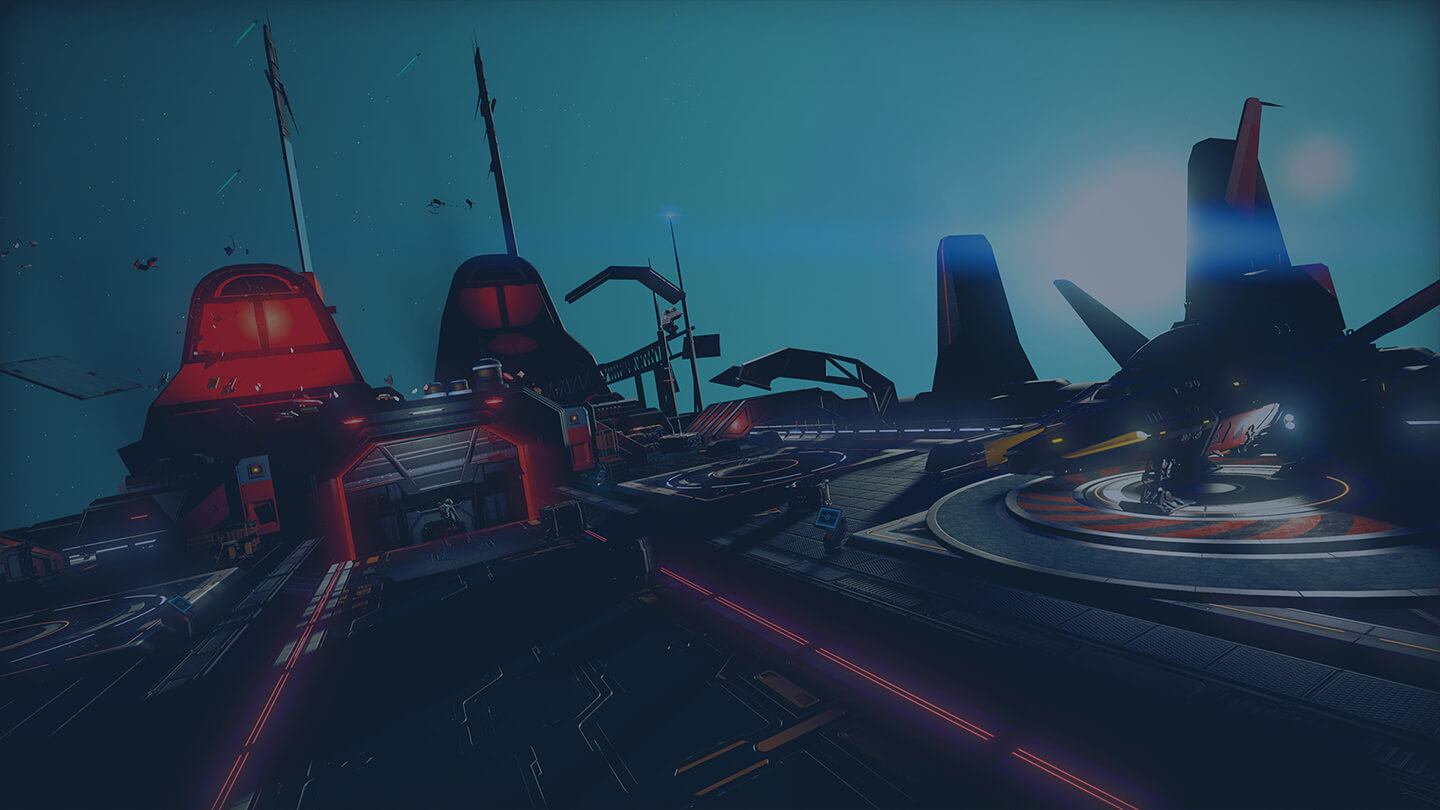
New Items and Crafting
Crafting has been streamlined, with a number of rarely-used items trimmed to reduce inventory clutter. Other frequently used items have had their inventory stack size increased.
New caches of resources may now be found underground, ready to dismantle into usable parts.


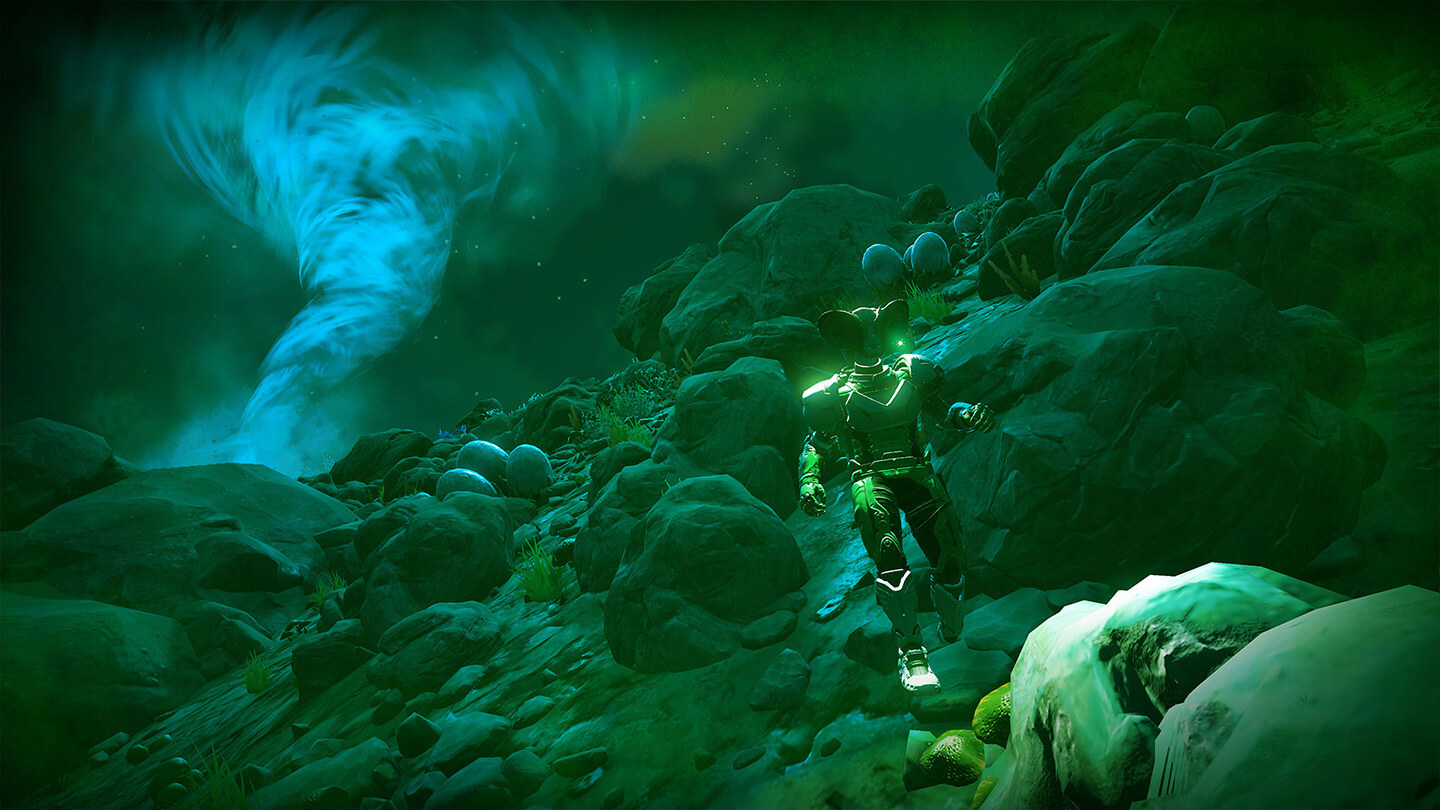
Enhanced Terrain Detail
Explore more visually pleasing landscapes with enhanced terrain rendering.
Noise normal, height and specular maps are now used, and blending between geometry normals and tile normals has been improved, contributing to more detailed terrain – especially at long distances.

Enhanced Planet Quality Settings
On PC, the “Ultra” setting for Planet Quality has been upgraded, improving the appearance and detail of grass and flora at a distance.
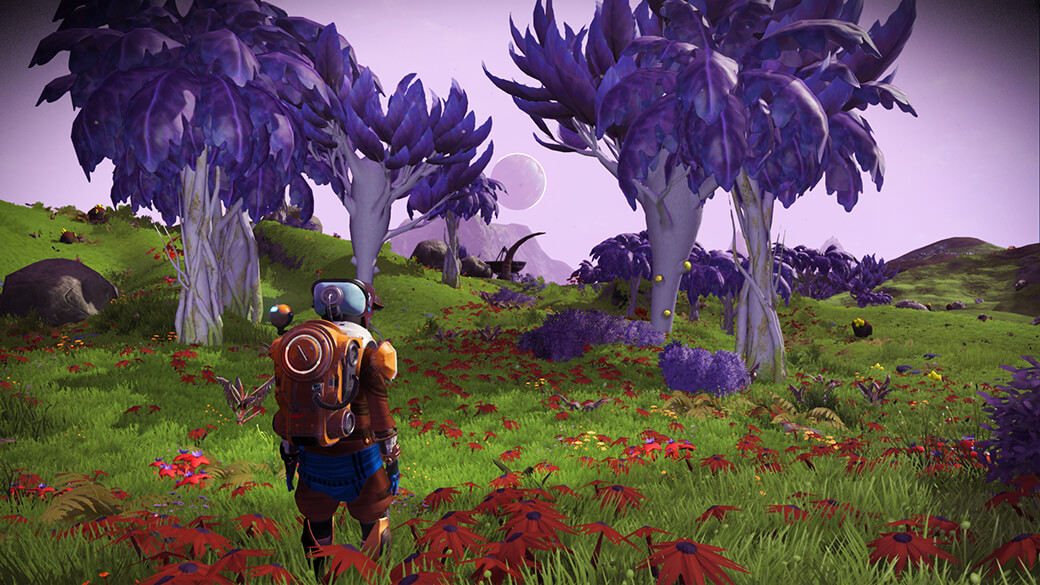
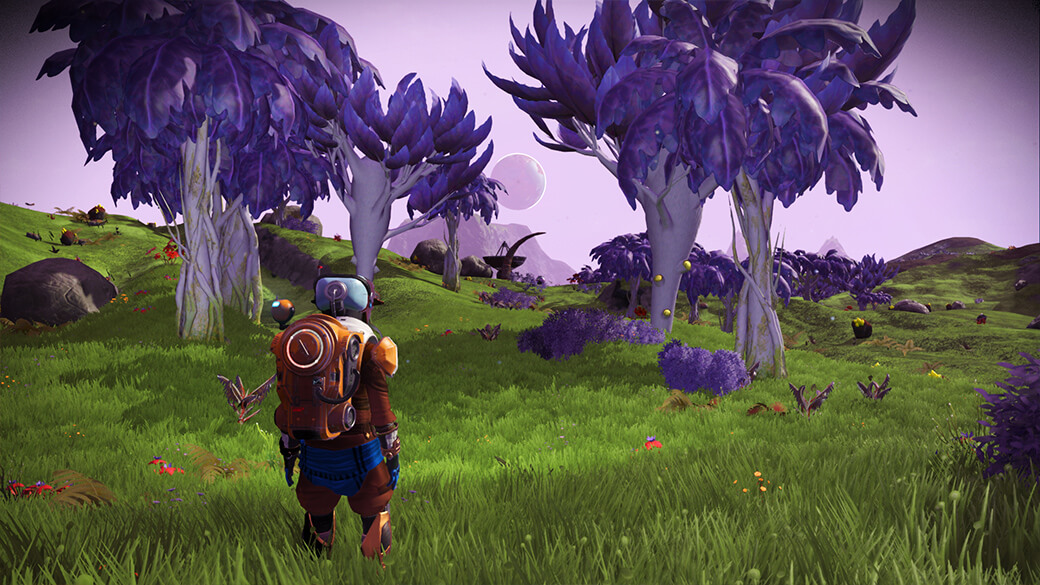

Exploration Guide
The Mission Log now features a Local Information Register, providing detailed information about the current system or planet.
The log also assists explorers to track down the full range of fauna, flora and minerals to discover on each planet.


Portal Interference Lifted
Travellers may now slip through portals and explore their destination freely, with no portal interference. An infinite universe has become more accessible.
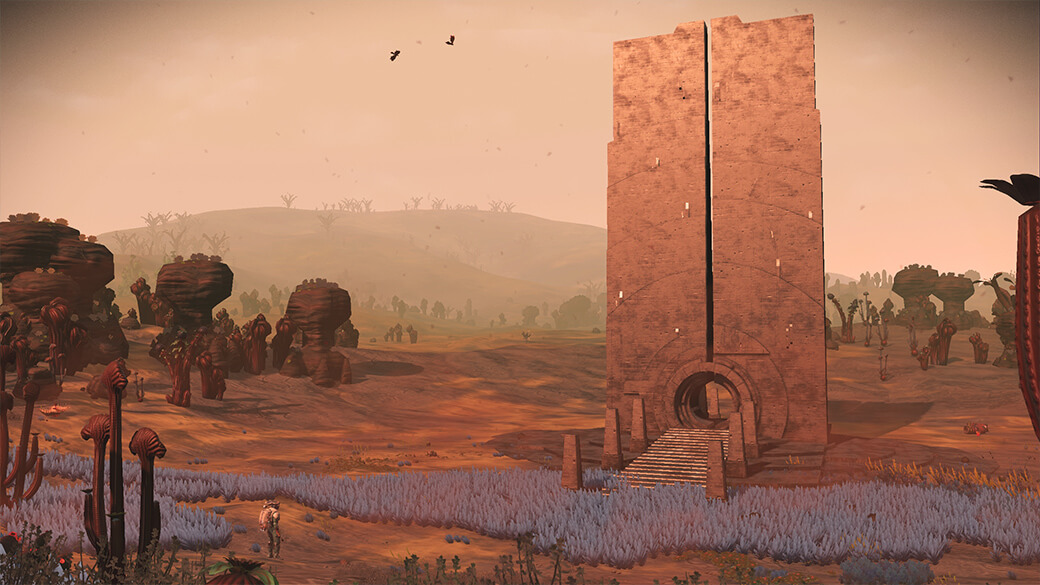

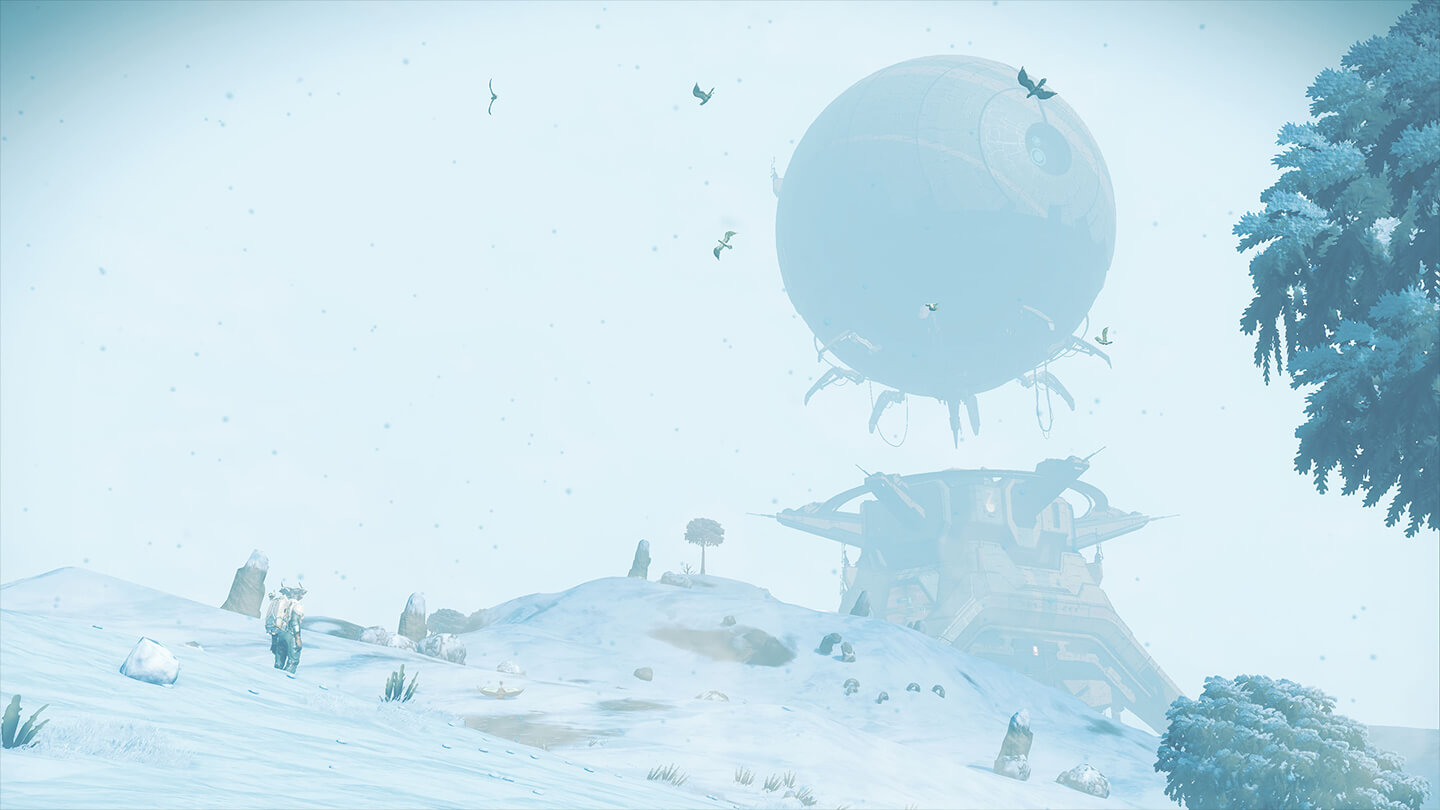
Meteors
Meteoroids can be observed crashing through the atmosphere of planets. Witness brilliant meteor showers, or lone shooting stars streaking across the sky – but be careful not to get too close.

Gravitational Anomalies
Anomalous planets can exhibit sudden gravitational shifts, allowing dramatic flights through a low-gravity environment.

Tornadoes
Powerful tornadoes now spiral across planets during the strongest storms, scooping up any unfortunate fauna or explorers who cross their path.

Lightning
Storms now split the sky with powerful bolts of lightning. Enjoy the spectacle, but avoid getting struck!
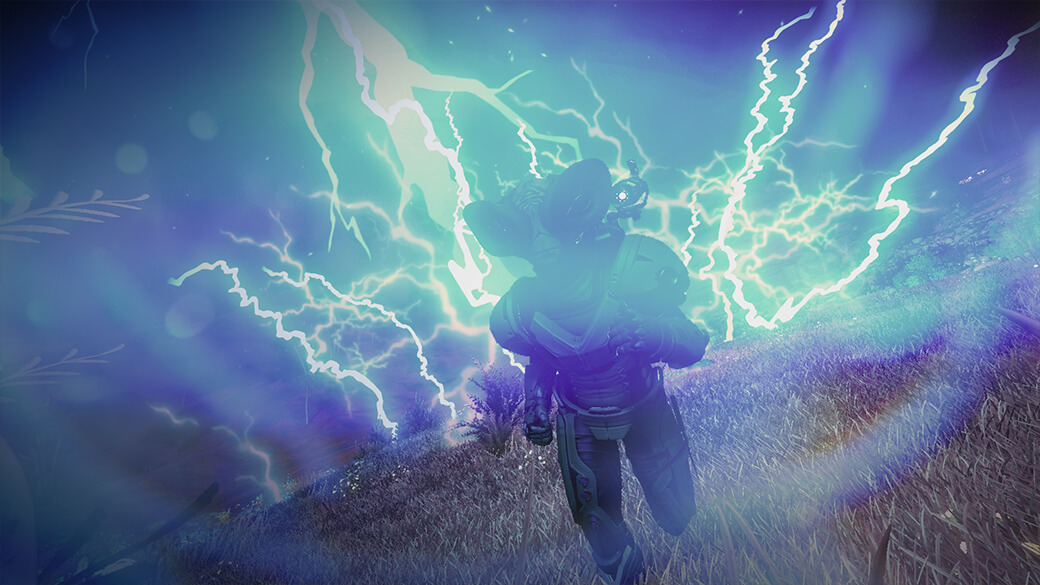

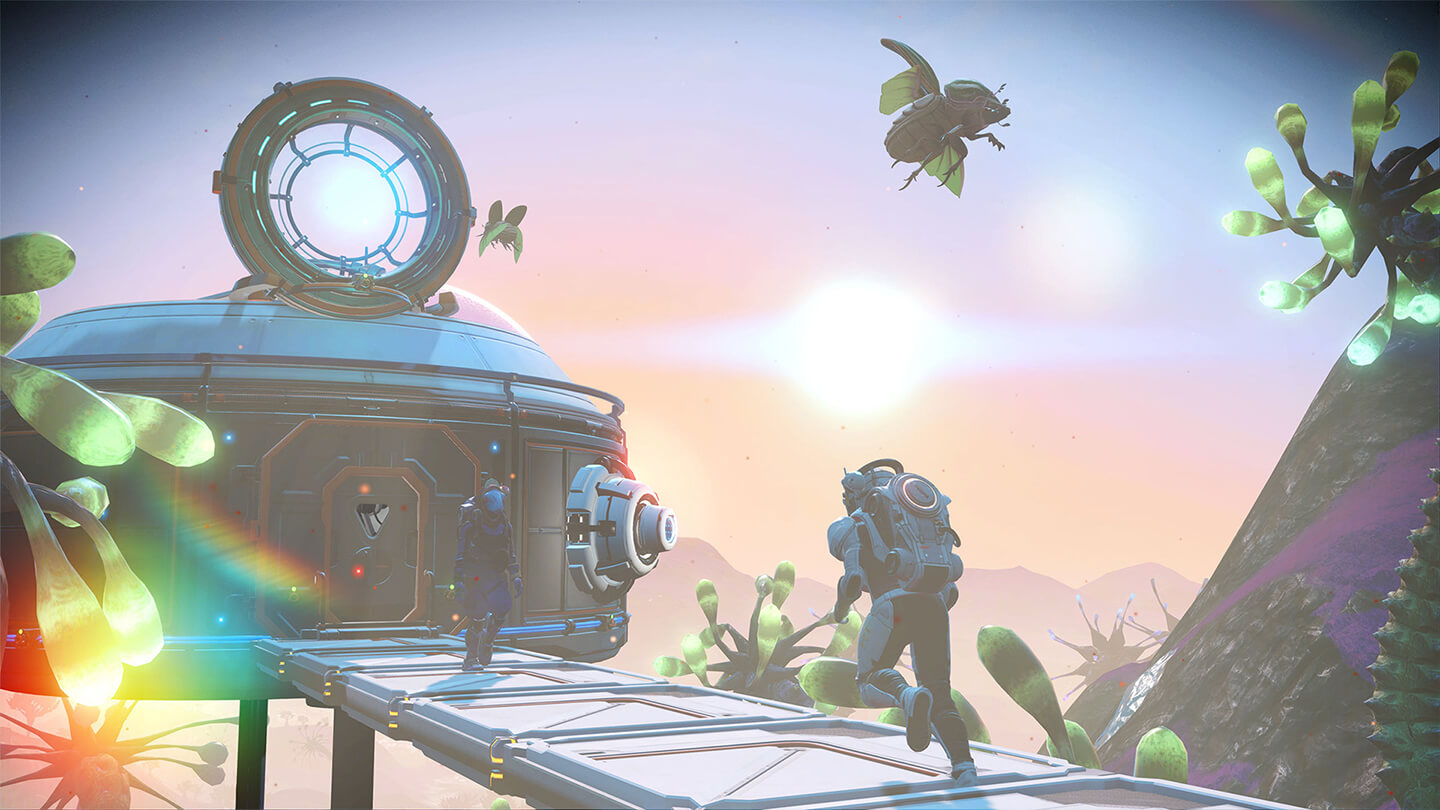
Planetary NPC Encounters
Black market traders, piloting their ships across planets, will now sometimes land on the planetary surface.
Explorers can approach these dealers to browse their selection of contraband technology upgrades.
The space station scrap dealer will now exchange pugneum for their own selection of black market goods.

Discovery Menu Improvements
The Discovery Page now offers tools to filter, sort and hide visited systems.
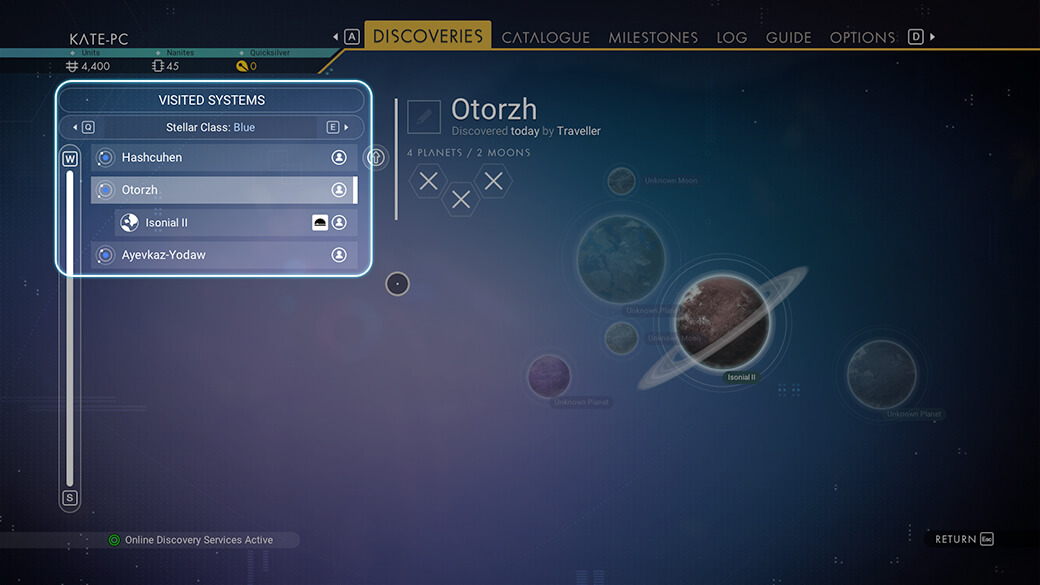
Other improvements include more detailed information to help locate planetary creatures, and more easily accessible information about your planetary bases.
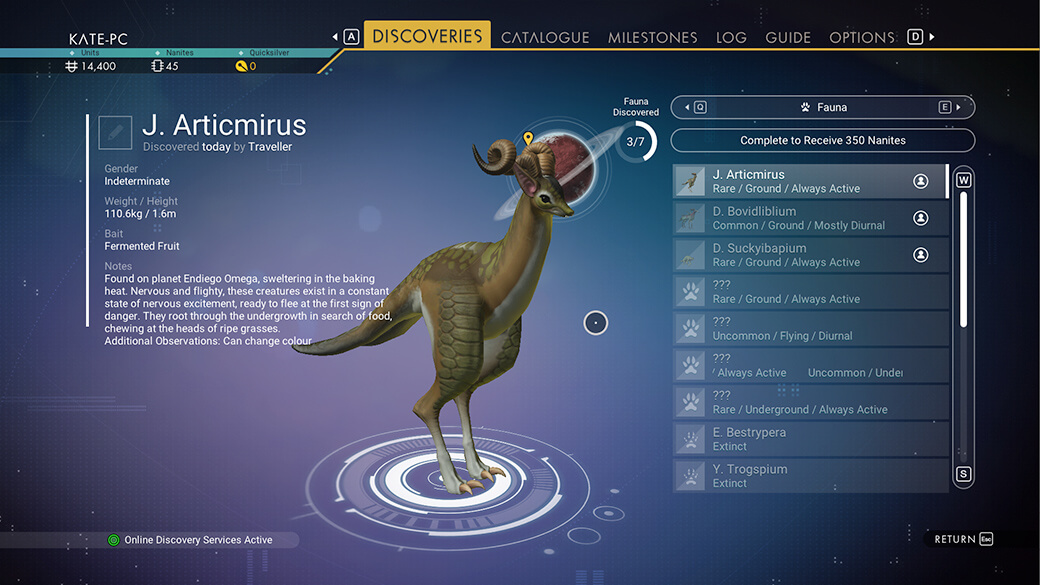

Multi-Tool Upgrades
Visit the Multi-Tool Upgrade Station on Space Stations to upgrade the class of your Multi-Tool, or expand its technology capacity by adding more slots.
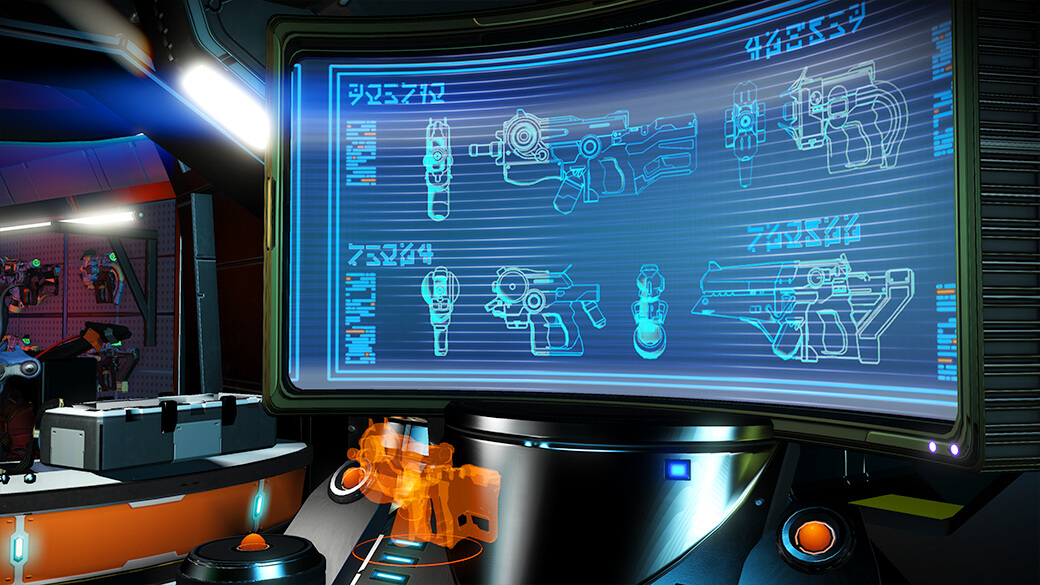

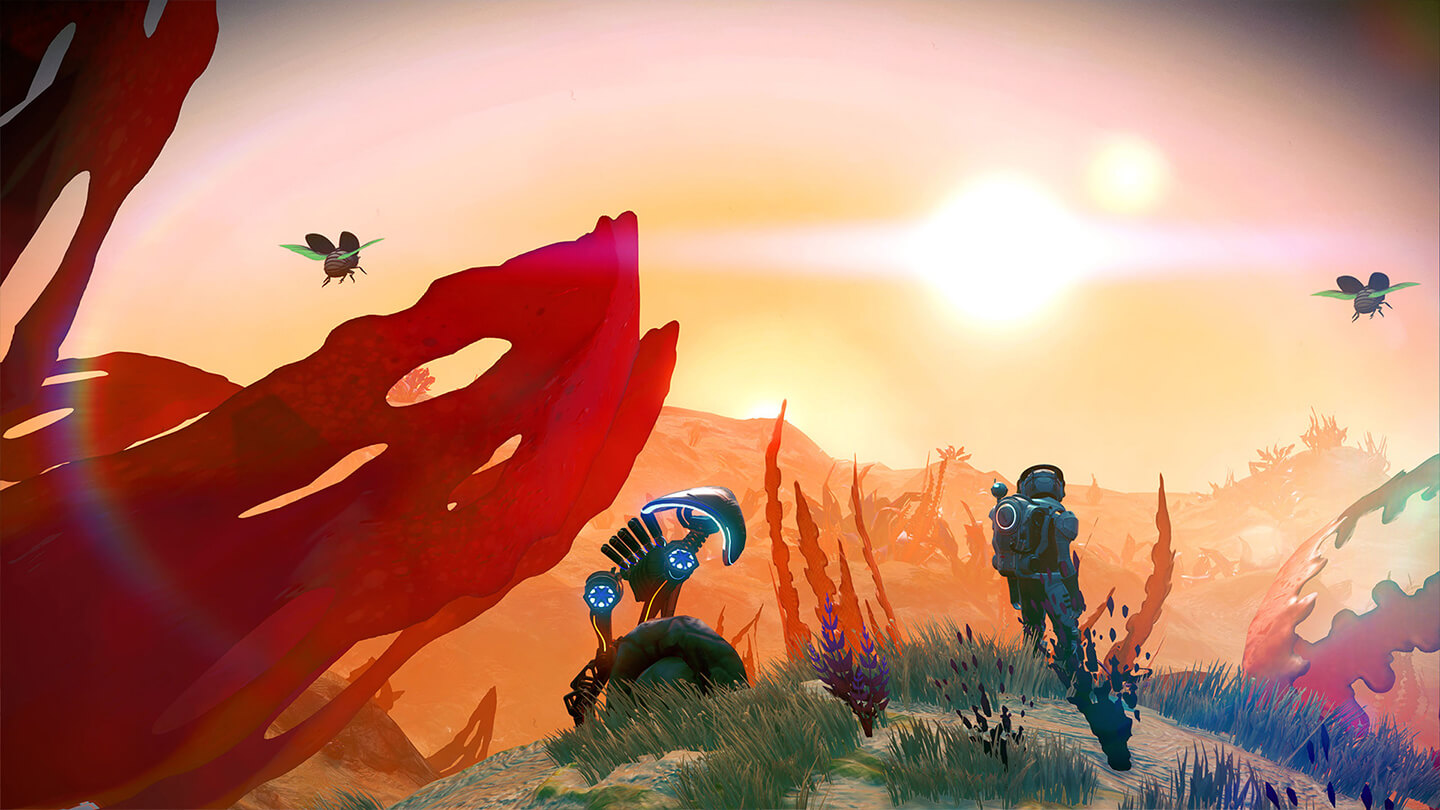
Insect Life
Discover giant beetles scuttling across planets and buzzing through the skies, as well as huge, soft-winged butterflies fluttering to land on flora and terrain.
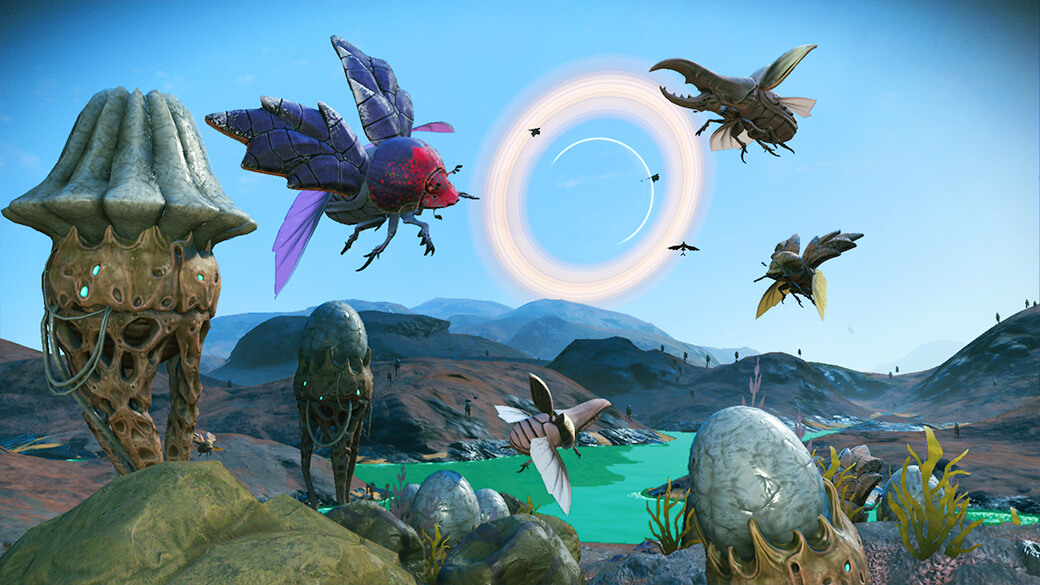

Wild Robots
Rare uncharted planets are now home to synthetic creatures, wandering wild across terrain on metallic legs.
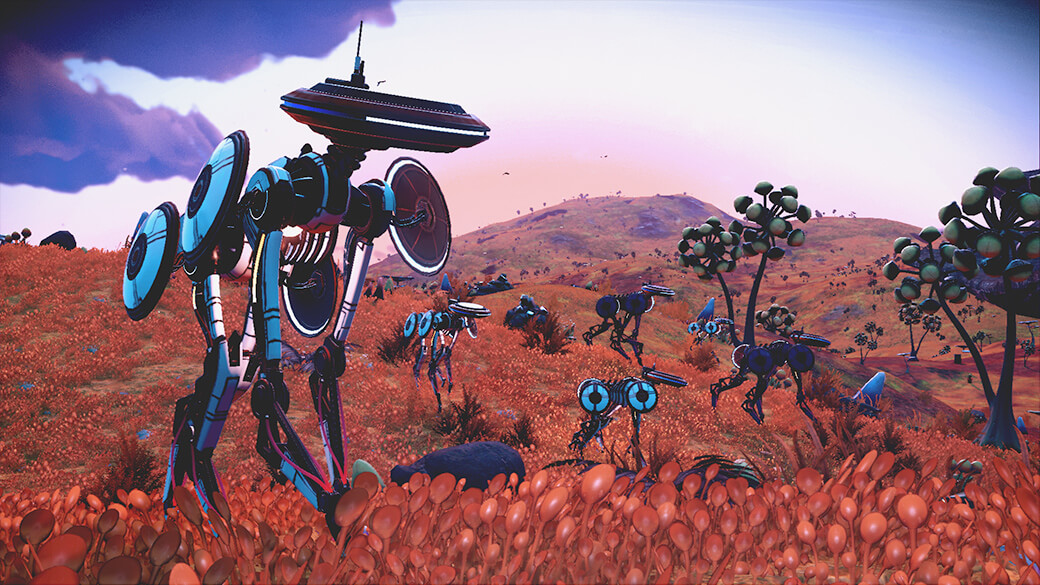

Improved Creature Behaviours
In addition to the new burrowing, rolling, and flying creatures, flocking behaviours for all fauna have been improved. Herd sizes have increased, and flying creatures can now be seen much closer to the ground.

Sandworms
Devastatingly huge worm creatures now lurk beneath the planet’s surface. Tread carefully.

3.0 Patch notes
Planetary Generation
- New planets have been created in most star systems.
- Planets can now generate much more varied terrain, including mountains four times larger than anything previously possible.
- Terrain generation for existing planets has not been affected, and player bases have not been reset.
Planetary Visuals
- Planetary terrain rendering has been significantly improved.
- Planetary colour diversity has been significantly increased.
- Planetary lighting diversity has been significantly increased.
- Large numbers of new plants, rocks and other objects have been added to each planet type, over doubling the available diversity.
- In addition, scorched planets have a chance of becoming volcanically active.
- Lush planets also have a chance of becoming marshlands or swamps.
- Every planet has a small chance of becoming infested with bizarre alien growths.
- This generation change has been done in such a way that no existing planet will have its fundamental type or hazard changed.
- PC players with planetary visual quality set to ‘Ultra’ will see grass and other decorative props rendered out to larger distances.
- A number of issues have been fixed that could cause patches of grass and other objects to pop out of existence when close to the player.
Atmospheric Visuals
- The visual quality of cloud rendering has been significantly improved.
- The pattern of clouds seen on a planet from space now matches the environmental conditions on the planet.
- During storms, cloud coverage now increases and darkens.
- Cloud coverage levels are now procedurally generated and vary from planet to planet.
- Cloud coverage levels now vary over time.
Star System Visuals
- Additional stars have been added to the universe.
- Some systems now have binary stars.
- There is a rare chance for a system to have ternary stars.
Planetary Fauna
- A large number of new, highly exotic creatures have been added to the universe.
- Some uncharted systems may contain planets that are populated by rare cybernetic lifeforms.
- The diversity of insect and flying life has been increased.
- The behaviour and animations for flying creatures has been significantly improved.
- Flying and swimming creatures can now flock together.
- Creature generation has been reset. However, previous creature discoveries are now noted in the ‘Extinct’ section of the Discoveries page.
- New cooking products have been added, reflecting the range of novel meats and other sustainably harvested ingredients made possible by the new creature types.
Planetary Weather
- New weather and other atmospheric events have been added.
- Planets may experience shooting stars and meteor showers. Distant meteor showers are beautiful, but it is advised to avoid standing at the impact site.
- Lightning may now strike during storms.
- There is now a rare chance that tornadoes can form during a storm.
- Some extreme temperature worlds may experience firestorms, where the very surface of the planet may erupt into flame.
- Anomalous planets may now experience strange gravitational events.
- During storms, the Exosuit can now take advantage of the extreme conditions: superheated temperatures can be processed into improved jetpack efficiency; freezing temperatures prevent Mining Beam overheating; high radioactivity increases mining yield; dense toxic gases can be recirculated for additional stamina.
Planetary Buildings
- Previously empty planets now have a range of abandoned and/or ancient buildings.
- New colossal planetary archives have been added to the building generation.
- The archives contain the historical and literary records of the Gek, Korvax and Vy’keen.
- The archives are also home to a large number of NPCs and shops.
- The archives contain mapping stations that reveal the presence of nearby ancient ruins.
- Valuable ancient artifacts may be exchanged at the archive. The presented artifact will be swapped for a different item, and this cultural exchange will be rewarded with standing.
Sandworms
- Some planets are now home to colossal worms. Watch your step.
Traders
- Trader ships now occasionally land on the planet’s surface.
- These traders sell a range of exotic goods, including black-market upgrade modules.
- The scrap dealer found about space stations will now exchange pugneum for rare or exotic contraband items.
User Interface
- The game’s interface has had a total visual overhaul, including the boot flow, all in-game menus and screens, and the Analysis Visor.
- The space station and planetary base teleporter UI now match the interface used on the Space Anomaly.
- The teleporter interface now more consistently shows screenshots of the target base.
- The teleporter interface now displays information about the system or planet being warped to, such as weather or system economy.
- The Discoveries page now displays more information about where to find creatures. For example, locational information and active times of day are now listed.
- The Discoveries page now allows filtering of star systems based on inhabitants or solar class.
- Systems may now be hidden from the list of discovered systems.
- The Discoveries page system / planet view now displays more accurate information about player bases.
- A local information guide has been added to the mission log. This guide displays detailed information about your current planet or star system, as well as tracking the progress of your discoveries.
- Planetary base markers now display the name of the base.
- Deleting a base from the base computer now has a warning element to help prevent accidental deletion.
- A number of places in which the UI did not respect disabling press & hold have been fixed.
- Fixed a number of visual issues with the display of information on the Galaxy Map.
- The number of items in an inventory stack is now displayed in the popup header.
- A depth readout has been added to the player HUD when underwater.
Photo Mode
- New photo mode filters have been added.
- Photo mode controls over fog and cloud density have been fixed and improved.
- Photo mode controls over vignettes have been fixed.
- Photo mode control over FOV has been fixed and improved.
- Photo mode control of depth of field has been improved, with separate controls for focal depth and distance.
- Photo mode now captures stormy conditions accurately.
- Photo missions from the mission board now offer more assistance in locating an appropriate planet to take a photo.
Crafting and Items
- A number of lesser-used crafting products have been removed from the game.
- A smaller number of new crafting products have been added to replace them.
- The number of specialist survival products have been reduced. The stack size for the remaining survival products has been increased.
- The stack size for Glass has been increased.
- A range of new buried items have been added to planets. These can be found and processed to reveal a range of exotic and interesting new items.
- Fixed a number of issues with items being in the wrong place in the Catalogue.
Multi-Tool upgrades
- Multi-Tools can now be upgraded at the Multi-Tool technology merchant aboard most Space Stations.
- New inventory slots can be added, up to a maximum size for the current class. These slots cost a large number of units.
- Multi-Tool class can also be upgraded for a significant amount of nanites.
- Multi-Tool Expansion Slots allow the addition of an inventory slot for free. Find these upgrade circuits while exploring planets.
Portal interference
- Portal interference for conventional portals has been removed. Players may explore freely.
- After going through a portal, the return portal will remain active until you leave the planet. Your previous system is added to the list of available destinations at the space station teleporter.
Other Fixes
- Improved the handling of the third person camera when on slopes, to avoid the camera becoming stuck in grass.
- Reduced player and camera jitter in third person.
- Improved the performance of the third person auto-follow camera when going up and down steep slopes, so that the camera attempts to adjust for the angle of the slope.
- Reduced the auto-centre strength on the falling camera.
- Trade economies have been rebalanced, so that the economy will be less affected by the mass selling of non-specialist items.
- Player freighters now supply power automatically to all base parts placed aboard them.
- Fixed an issue that caused the Mining Speed bonus to not actually increase the speed of the mining laser.
- Fixed an issue on the Nexus participants screen that caused the player name to be blank if they are not aboard the Space Anomaly.
- Added diminishing returns to resource extractors, so that after building a large number of extractors in one place, the amount extracted by each new extractor is slightly less.
- Fixed an issue that caused the mode select screen to be invisible in ultra wide resolutions
- Fixed an issue that caused the Eye of the Korvax helmet to be black.
- Fixed an issue that prevented markers placed on crashed freighters from clearing.
- Fixed an issue that caused the lighting on the children of helios to be overblown.
- Fixed an issue that allowed players to delete a freighter storage room while standing inside it.
- Fixed a number of issues with base building parts looking incorrect when seen at a distance.
- Fixed an issue that caused the lighting inside large cylinder rooms to be overly bright.
- Fixed an issue that caused the text “%EXOTIC%” to appear in some Nexus mission descriptions.
- Fixed an issue that prevented some abandoned starships from being claimed, even though there was no NPC with them.
- Fixed an issue that caused dead creatures to become embedded in the terrain.
- Fixed an issue that caused the lightning to be overblown on some rare props.
- Fixed an issue that caused underwater props to appear overly bright.
- Fixed an issue that caused the mining laser impact effect to stay active forever.
- Fixed an issue that prevented some time-based missions from starting correctly.
- Fixed an issue that caused some mission UI elements to appear during warp.
- Fixed a mission blocker that could occur when being awarded a product and technology recipe at the same time.
- Fixed a number of interface errors that could occur during the process to upgrade an inventory.
- Fixed an issue that caused an inventory transfer warning to pop up at inappropriate times.
- Fixed an issue that caused the portable refiner to be missing its audio.
- Fixed an issue that could cause mission markers to fail to place correctly when the player was in an abandoned system.
- Fixed a number of issues that could cause Nexus missions to mark the wrong system.
- Fixed a number of occasions where Geks were referred to as ‘it’ rather than ‘they’.
- Fixed a text glitch that could occur when leaving a technology shop.
- Fixed an issue where NPC pilots did not have their name above their speech box.
- Fixed an issue where players were always awarded Gek standing from some interactions, even if the interaction did not involve the Gek.
- Fixed an issue where Nexus exploration missions would send players to planets without many creatures.
- Fixed an issue that caused the rarity description of creatures in the Discoveries menu to be incorrect.
- Fixed an issue that caused the flora and fauna description of a planet to be incorrect, eg saying there were abundant fauna when there were not.
- Planets will no longer be labelled as ‘paradise’ if they have any hostile environmental conditions.
- Fixed an issue that caused starship trail customisations to appear on other players’ ships.
- Fixed a mission blocker that could occur when mining cadmium for the Soul Engine.
- Fixed a number of issues with using the Steam Overlay in VR.
- Fixed an issue that prevented the Terrain Manipulator’s flatten mode from syncing in multiplayer.
- Fixed an issue that caused exploration frigates to display incorrect information when viewed through the Analysis Visor.




